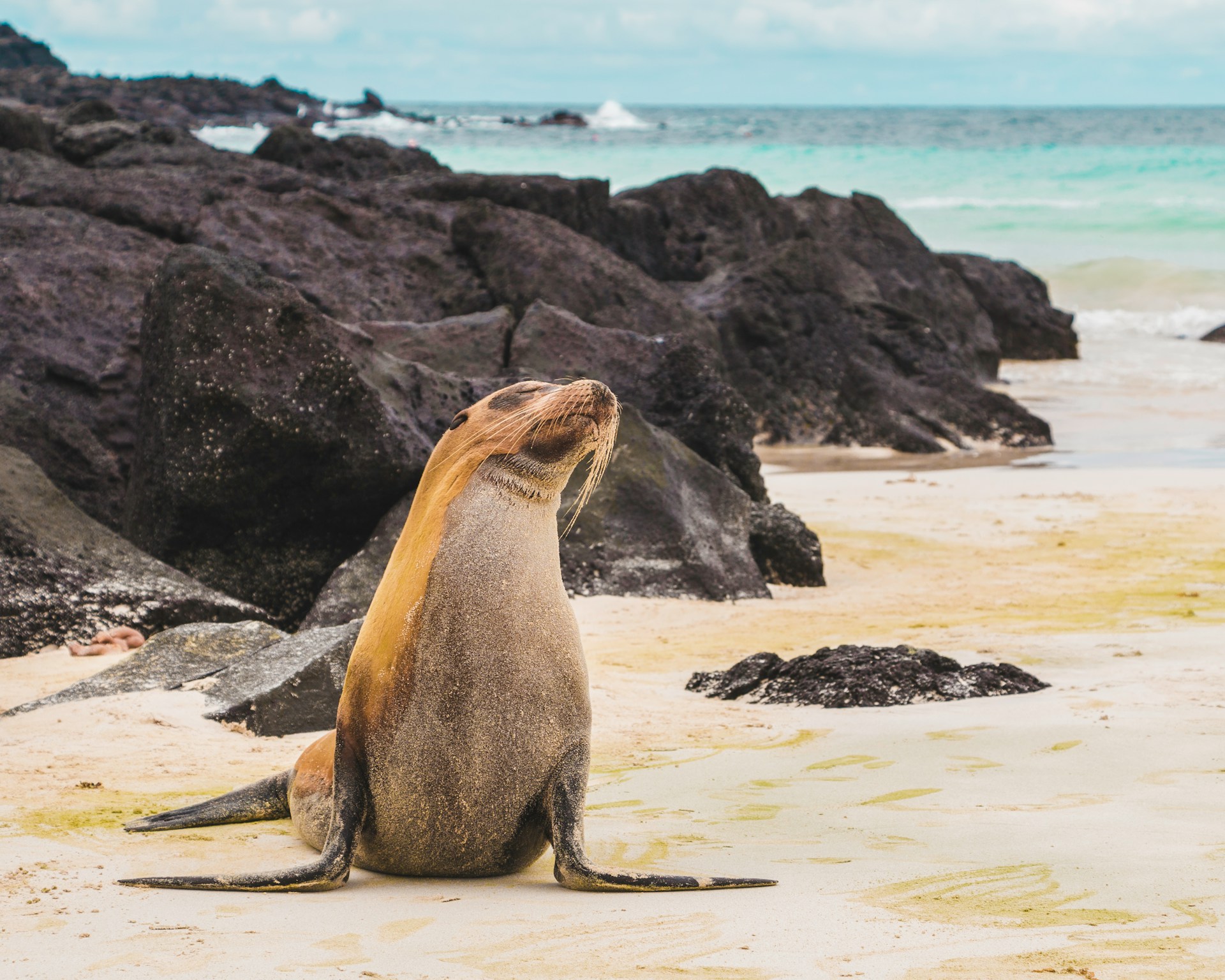
The Galapagos Islands
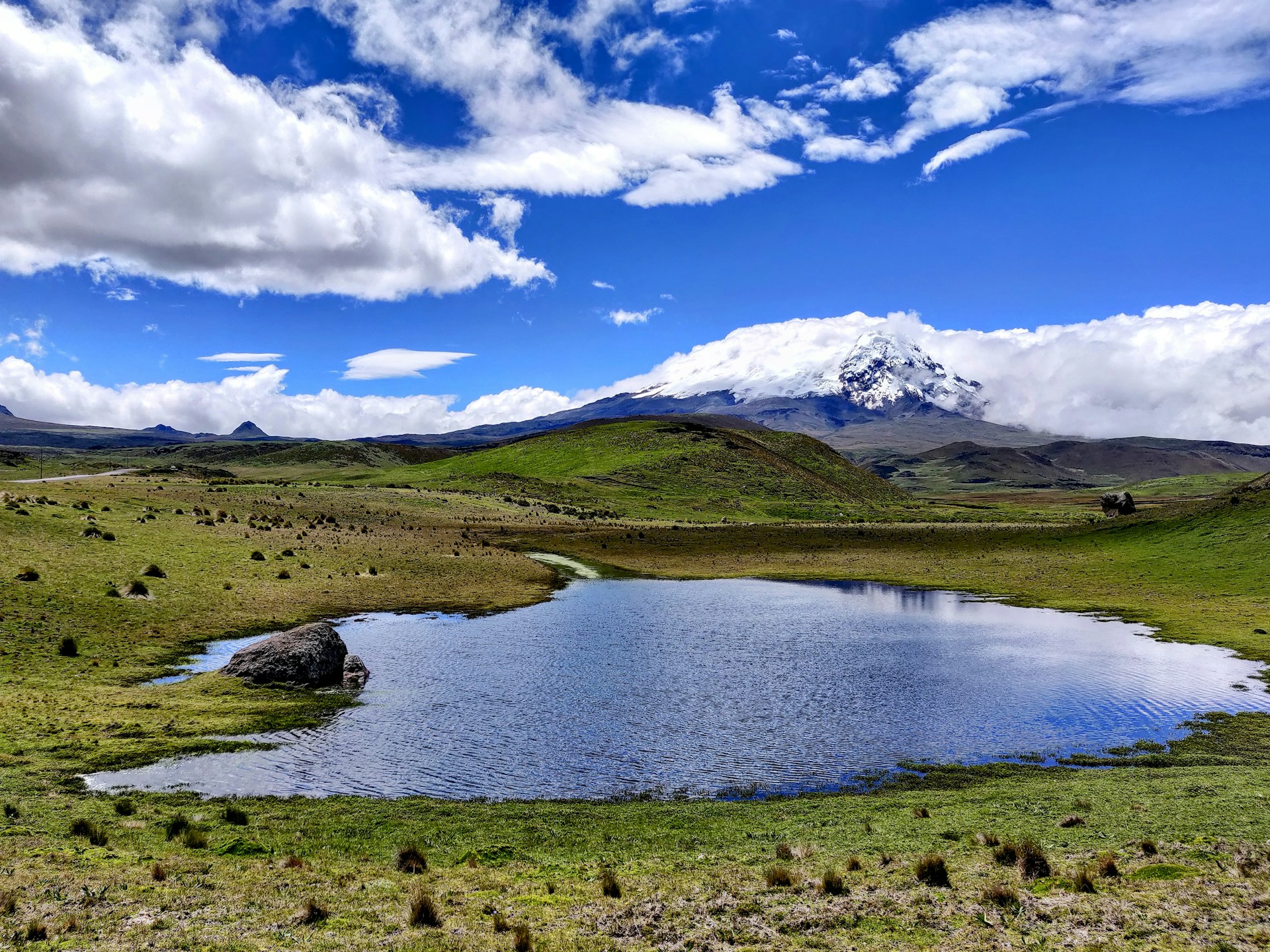
The Highland Region
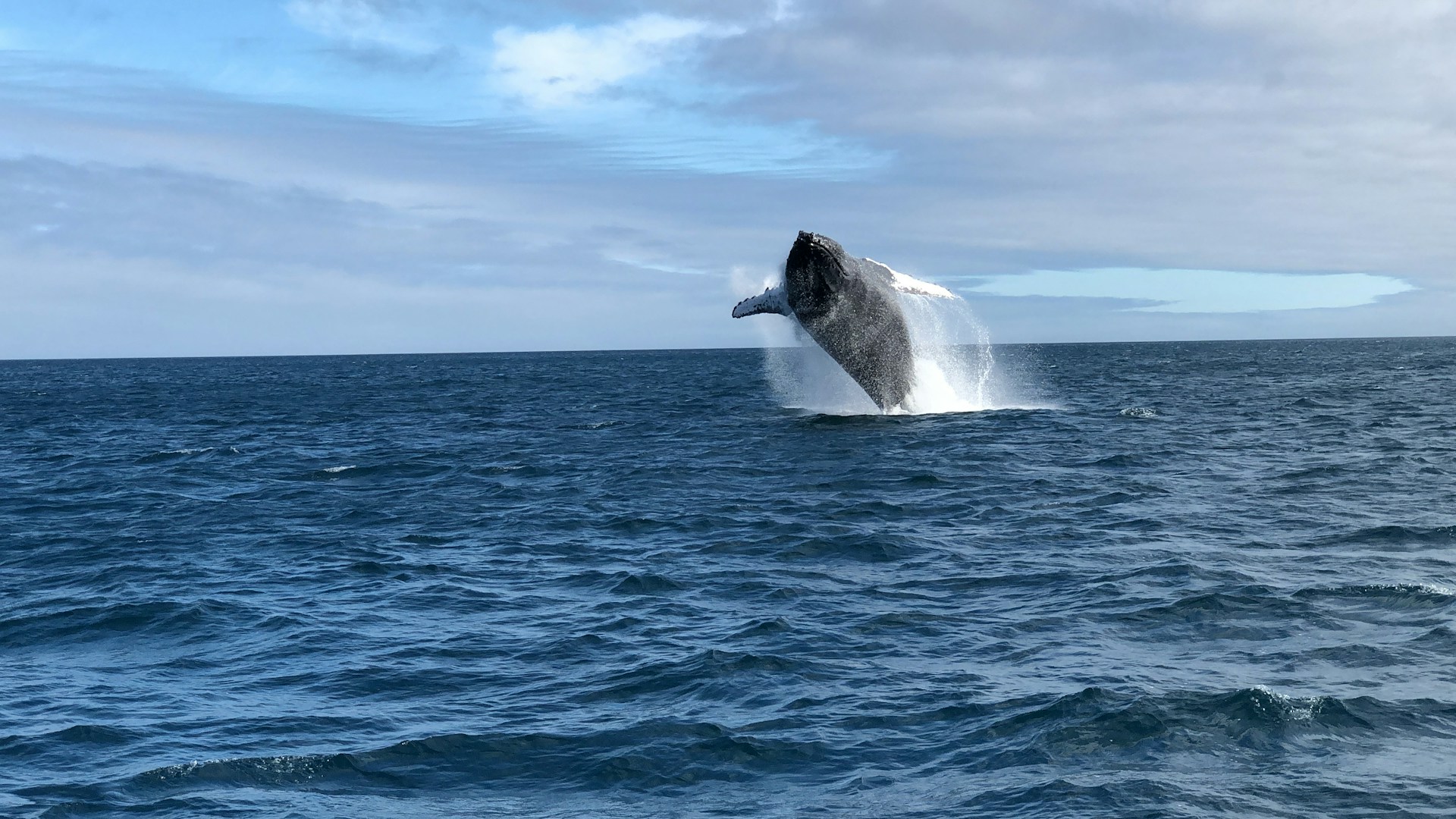
The Pacific Coast Region
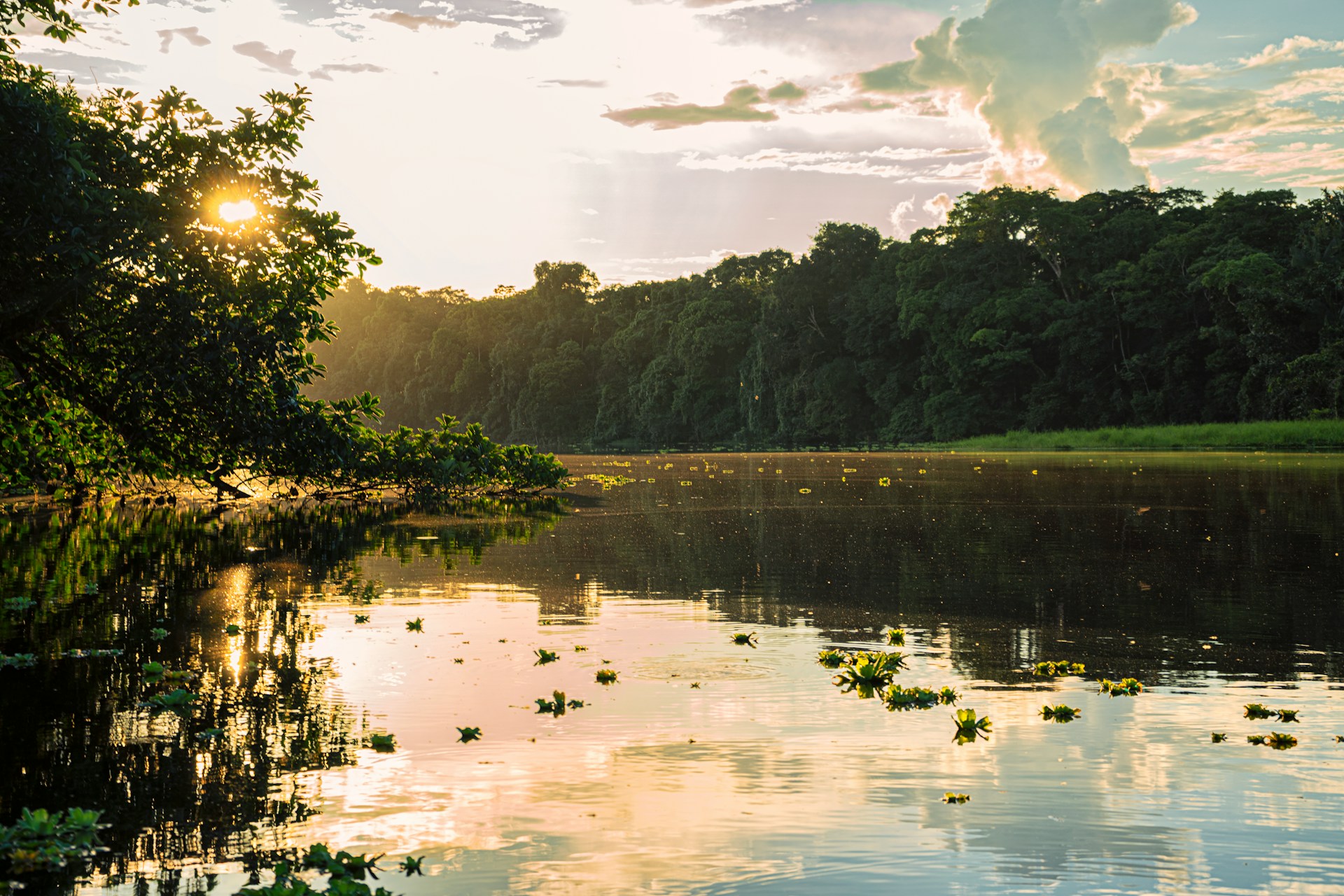
The Amazon Region
General Information
Ecuador is located in the northwestern part of South America. It consists of the mainland and the Galapagos Islands. The privileged geographical position of this country means that there is little bit of everything, here are the enchanted Galapagos Islands, the Pacific Coast, the Andes Mountains and the vibrant Amazon.
The altitudinal range goes from 0 to 6300 meters above sea level.
The limits are to the North with Colombia, to the South and East with Peru, and to the West with the Pacific Ocean.
The name of the country is due to the imaginary line that divides the planet into two hemispheres north and south, this imaginary line named the equator was discovered in 1736 by a group of the scientific part of the French Geodesic Mission, before that what is now Ecuador was named The Royal Audience of Quito.
- Surface:: 98,985 miles or 283,560 km2 is like Colorado 269 358,7 km² or Uk 243.305 km2
- Population: 18’000’000 people – 0,90% growth rate
- Demography: It is a multiethnic and multicultural country. 71.9% of the population identifies themselves as mestizo, 7.4% as Montubio, 7.2% as Afro-Ecuadorian, 7% as indigenous, 6.1% as white, and 0.4% as other ethnicities.
- Currency: US Dollar since 2000
- Electricity: 120 Volts
- Temperature: average 24 C – 45F
- Main Cities: Quito’s Population is 2.8 million, Guayaquil’s Population 2.6 million, Cuenca’s Population is 600.000 million.
Official Language: Ecuador is a country with great ethnic, cultural and linguistic diversity. Spanish is the official and most spoken language in the country 93% but there are at least other native languages spoken, such as
- In the Coast Region: The Awa, Awapít, Chachi, Epera, Tsáchila.
- In the Amazon Region: The Cofán, Ingae, Secoya, Siona, Paicoca, Waorani, Wao tedeo, Shiwiar, Shiwiar chicham, Zápara, Achuar, Andoa, Andoa, Kichwa, Shuar.
- In the Andes Region: The Kichwas are 14 original towns that speak kichwa.Karangues, Otavalos, Natabuelas, Kayambis, Kitu Caras, Panzaleos, Chibuleos, Quisapinchas, Salasacas, Wuarankas, Puruahes, Canaris, Paltas, Saraguro.
The language of the indigenous peoples cannot be literally translated into Spanish, since each language represents a certain vision of the world.
Through language they differentiate themselves and know who they are and to which group they belong; language is identity.
Geography
The Galapagos Islands Region:
It is a living laboratory, Charles Darwin visited the islands in 1832 aboard the Beagle, giving rise to the theory of the origin of species.
The Galapagos are located 1,000 km / 600 miles out in the Pacific, it is known worldwide for the large number of endemic species that cohabit on a total of 13 islands of which only 4 are inhabited. The cold and warm sea currents modify the climate, the continuously growing volcanic islands have created exceptional conditions where a unique collection of animals and plants cohabit the Enchanted Islands.
The weather here is not changing drastically so you can visit the Galapagos Island all year round, the weather will be pleasant.
The Galapagos warm and rainy season runs from December to May, the temperature at this time is from 22C (71F) to 32C (89F).
The Galapagos Dry or Cold season runs from July to December approximately, the highlands of the larger islands have constant misty fog, the temperature at this time is from 21C (69) to 28C (82F).
If you are diver this is the water temperature varies during the year:
December to June from 21C (70F) to 27C (80F)
July to November from 18C (65F) to 23C (75F)
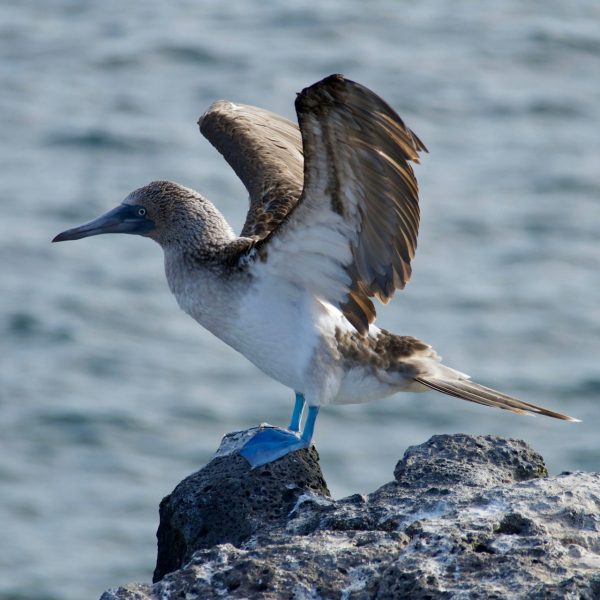
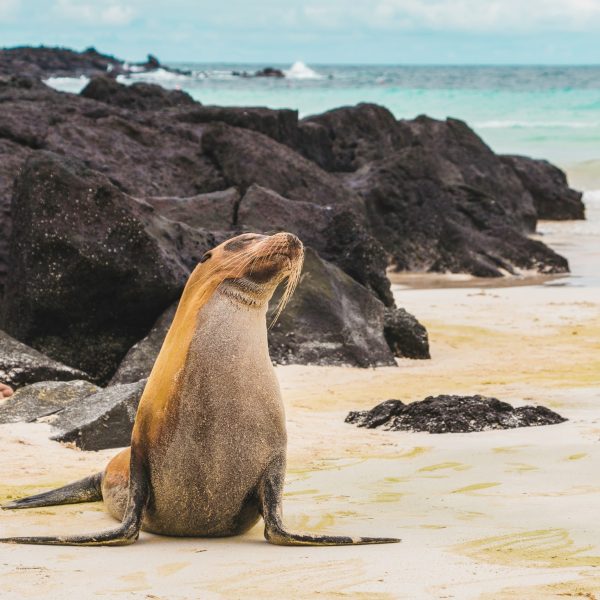
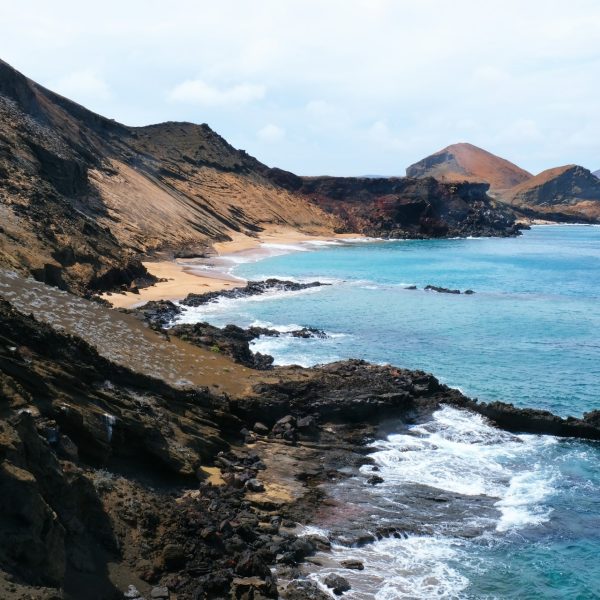
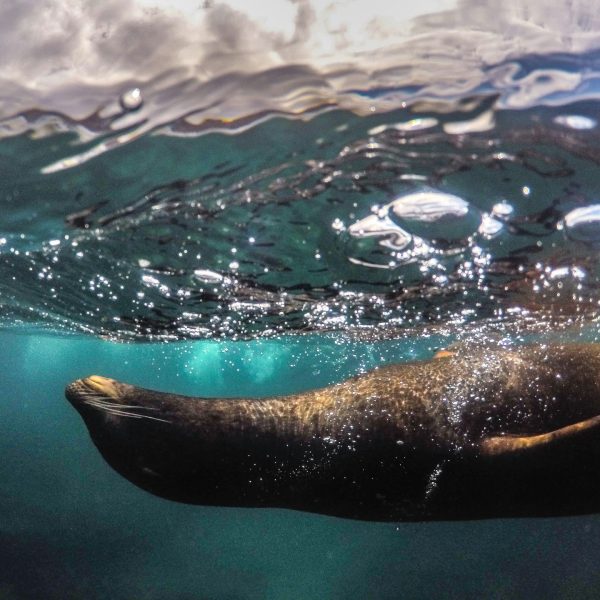
The Coast Region:
With an altitude range of 0 to 1,600 meters (5,200 feet). There are 7 provinces in this region: Esmeraldas, Santo Domingo de Los Tsáchilas, Manabí, Guayas, Los Ríos, El Oro and Santa Elena.
The impressive coast of Ecuador, the stunning beaches run the length of 2,000 km of coast offers us enchanting landscapes, ancient culture, mangroves forests, beaches and delicious cuisine. Generally, the region is warm and humid with temperature averaging 25C (76F) to 31C (90F). The rainy season is from December to May, the dry season is less humid but it doesn’t mean dry.
Ecuador is a destination for whale watching also to visit the cocoa farms, explore the National Parks and Reserves.
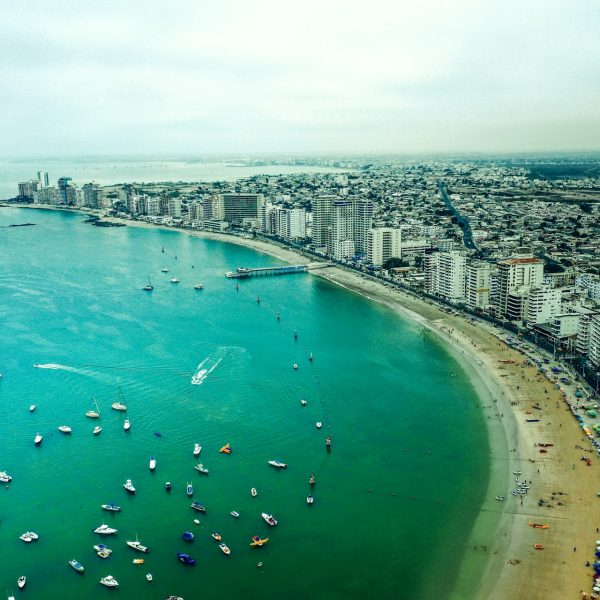
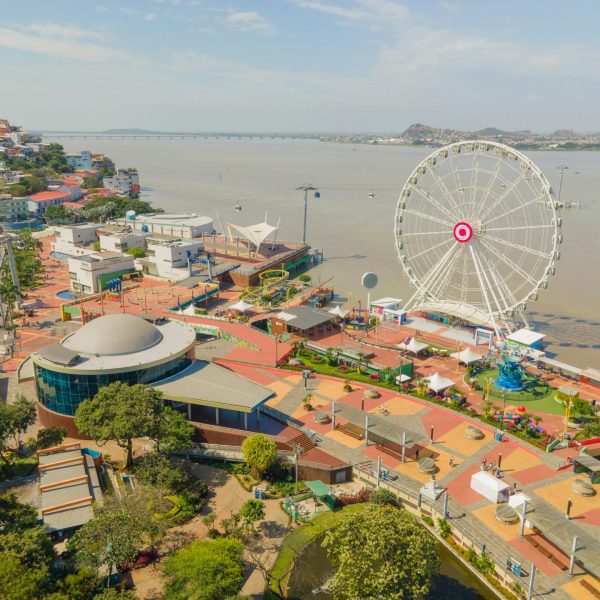

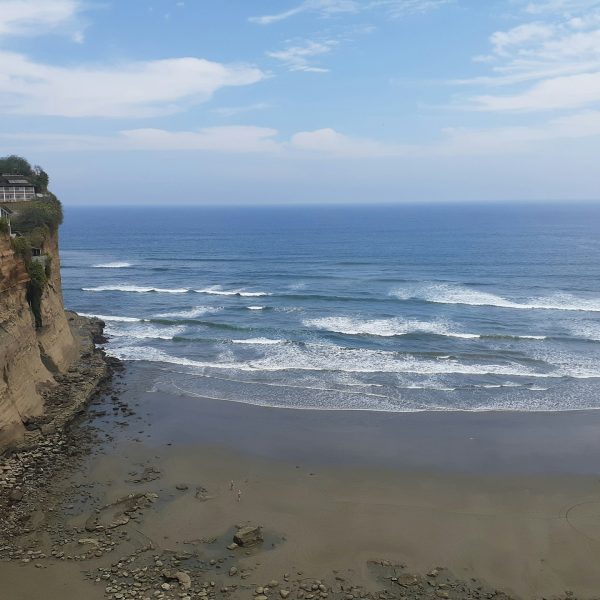
The Highland Region:
The Andes are made up of three mountain chains:
The Western Andes, from which 8 rivers flow into the Pacific Ocean. The majority of the volcanoes are in this mountain chain, from north to south this are: Chiles-Cerro Negro, Cotacachi-Cuicocha, Pululahua, Casitagua, Pichincha, Atacazo, Corazón, Illiniza, Quilotoa, Chimborazo, Carihuarazo and many others of smaller or older dimensions. With elevations from 9800 to 20,600 feet.
The Central Andes Mountain Range there are mountains above 5,000 meters (16,000 feet) such, Cayambe Volcano, the only volcano of the world crossed by the equator imaginary line, Cotopaxi.
The East Andes Mountain Range is divided into different sections such as the Cordillera de Guacamayos, Cutucu, and Condor.
The three mountain ranges are joined together by knots that form valleys where the cities are settled.
There are 11 provinces in the Andes region: Azuay, Bolívar, Cañar, Carchi, Chimborazo, Cotopaxi, Imbabura, Loja, Pichincha, and Tungurahua.
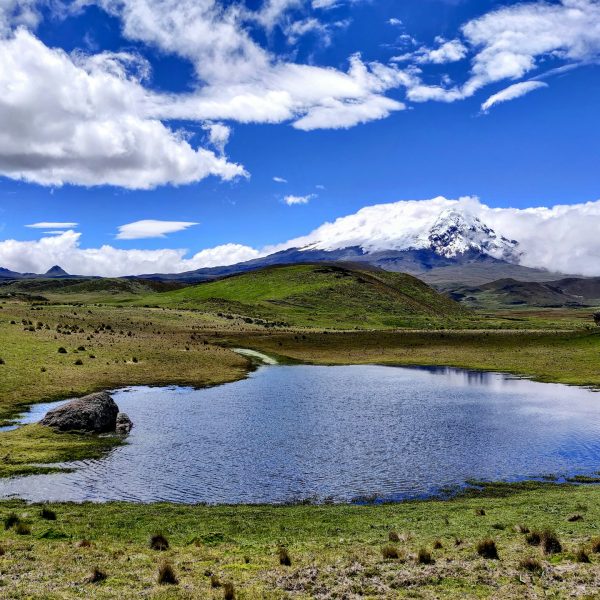
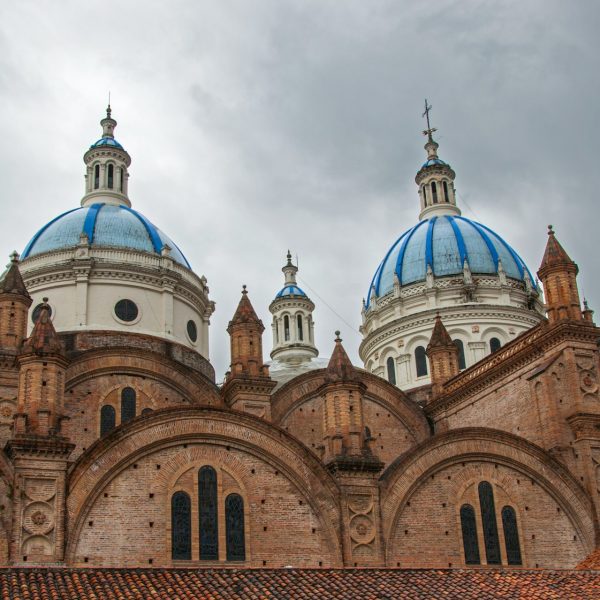
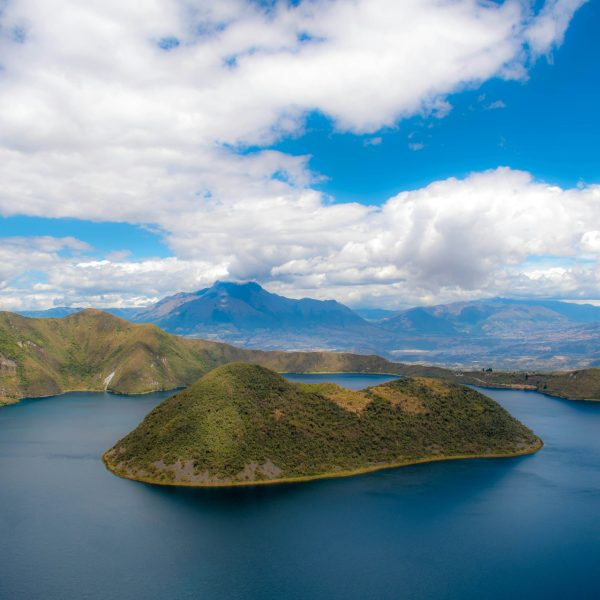
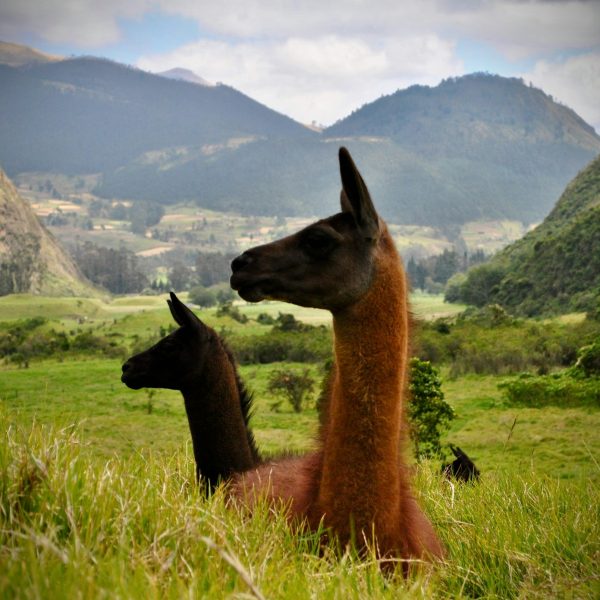
The Amazon Region:
The Ecuadorian Amazon, also known as the Oriente, is a vast expanse of tropical rainforest that occupies almost half of the eastern region of the country. This lowland ecosystem, which lies below 400 meters (1,300 ft) above sea level, is characterized by its consistently hot and humid climate, with a rainforest climate ranging between 25 and 32 °C (77 to 90 °F).
The Amazon Basin, and the Ecuadorian Amazon in particular, is home to truly astounding biodiversity: the Yasuní Biosphere Reserve is believed by many to be home to the most diverse set of species on the Earth. In the Ecuadorian Amazon you will find 800 species of fish, including three sorts of piranhas, 350 Species of reptiles, including anacondas and iguanas, more than 300 species of mammals, including monkeys and jaguars, thousands of species of plants and trees, thousands of species of insects: one acre of rainforest may be home to 70,000 species of insect.
There are 5 provinces in this region: Sucumbíos, Orellana, Napo, Pastaza, Morona Santiago y Zamora Chinchipe.
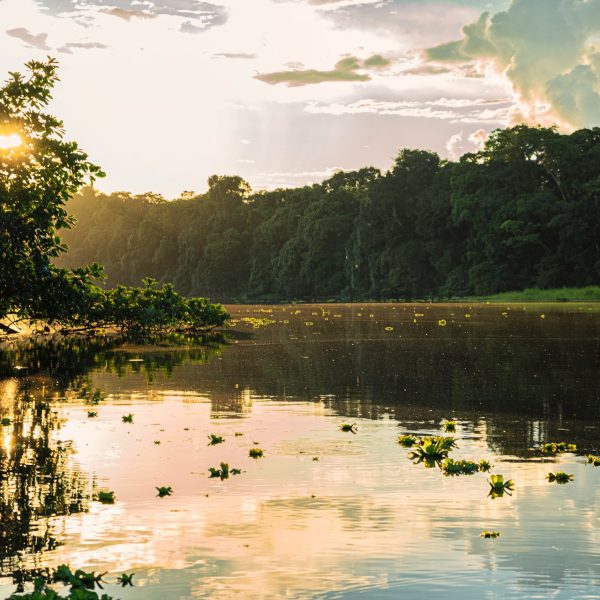
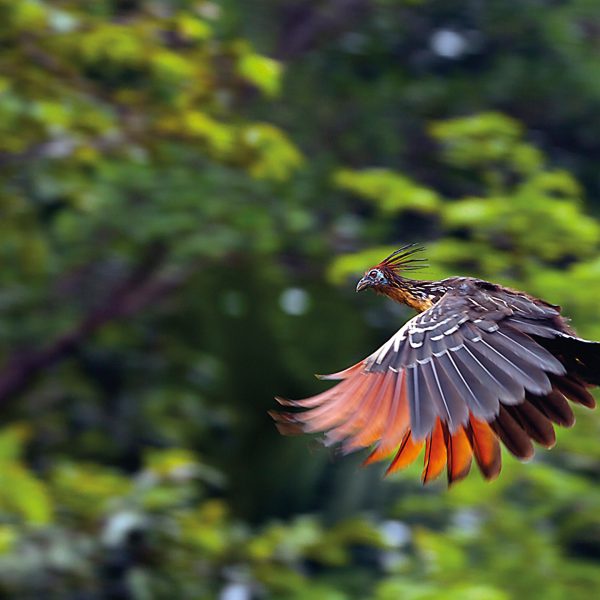


Weather
Ecuador has no dramatic changes in weather, just changes in seasons: the dry and the rainy season. Here in Ecuador, the sunrise is at 06:00 am and the sunset at 06:00 pm/ 12 hours of light and 12 hours of dark is always the same. So, in general weather is uniform over the year.
Here the facts that explain the weather:
The Tropics:
Provide Uniform Temperature-no Limit Factors Of Extreme Temperatures
The tropic is considered the area between the Tropic of Cancer and the Tropic of Capricorn.
This area has the most diverse ecosystems on Earth (the largest number of species per surface) and is also the most fragile. Is an area of enormous cultural diversity.
The area is warm all year, averaging 25 to 28 Celsius (77 to 86 degrees Fahrenheit). This is because the tropics get more exposure to the sun, they are in the widest part of the planet. Because of that, the tropics don’t experience the change of seasons the rest of the Earth does. The tropical seasons are just two: the wet season and the dry season.
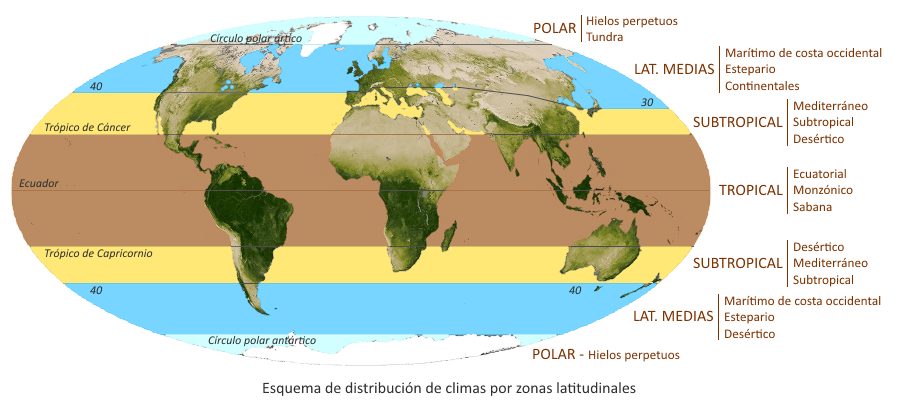
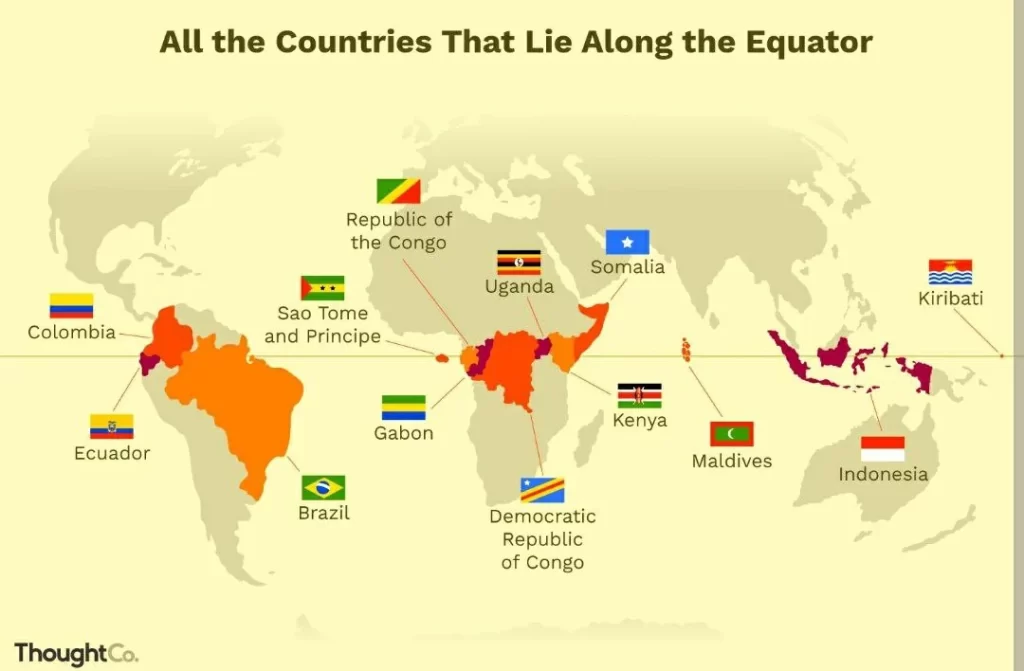
The Equator Line:
Latitude 0 – Millions Of Years Of Uniform Weather
The Equator is an imaginary line that crosses and divides the globe into two equal parts, the northern hemisphere, and the southern hemisphere.
There are 13 countries that lie on the Equator. In América: Ecuador, Colombia, Brasil. In Africa: Gabon, El Congo, Uganda, Kenia, Somalia, Indonesia, Malaysia, Equatorial Guinea, Maldives Islands, Kiribati.
In Ecuador country, the Equator line divides the mainland and The Galapagos Archipelago in two, leaving most of the Ecuadorian territory in the southern hemisphere.
The Andes:
Varied Ecosystems
Ecuador’s mainland is located on the South American Plate, this plate started to separate from the African Plate approximately 100’000.000 ago creating the Atlantic Ocean since this event the South-American plate has been moved to the west, and eventually encountered the Nazca Plate which moves to the east under the Pacific Ocean.
When these plates collided, the Nazca plate began to slide under the South American plate creating this force that pushed the rise of the Andes Mountains. This process is known as subduction and it is still happening it’s responsible for volcanic activity and earthquakes.
The origin of the Andes dates from 20’000.000 years, the name Andes could be a Quechua word translated to a high crest. It constitutes one of the widest mountain ranges on the planet
The Nazca plate (moves 65 mm per year, 2 inches) under the South American plate (moves 31 mm per year). It is divided into three sections: North-Center and South Andes. This Mountain Rage provides climatic diversity therefore biotic diversity. The Andes also act as barriers that isolate populations and speciation occurs.
It is the largest Cordillera of the world with 8500 kilometers (5281.655 miles) long and the widest part of the Andes is 750 km. It is estimated that around 25% of the world’s biological diversity is found in the Andean region.
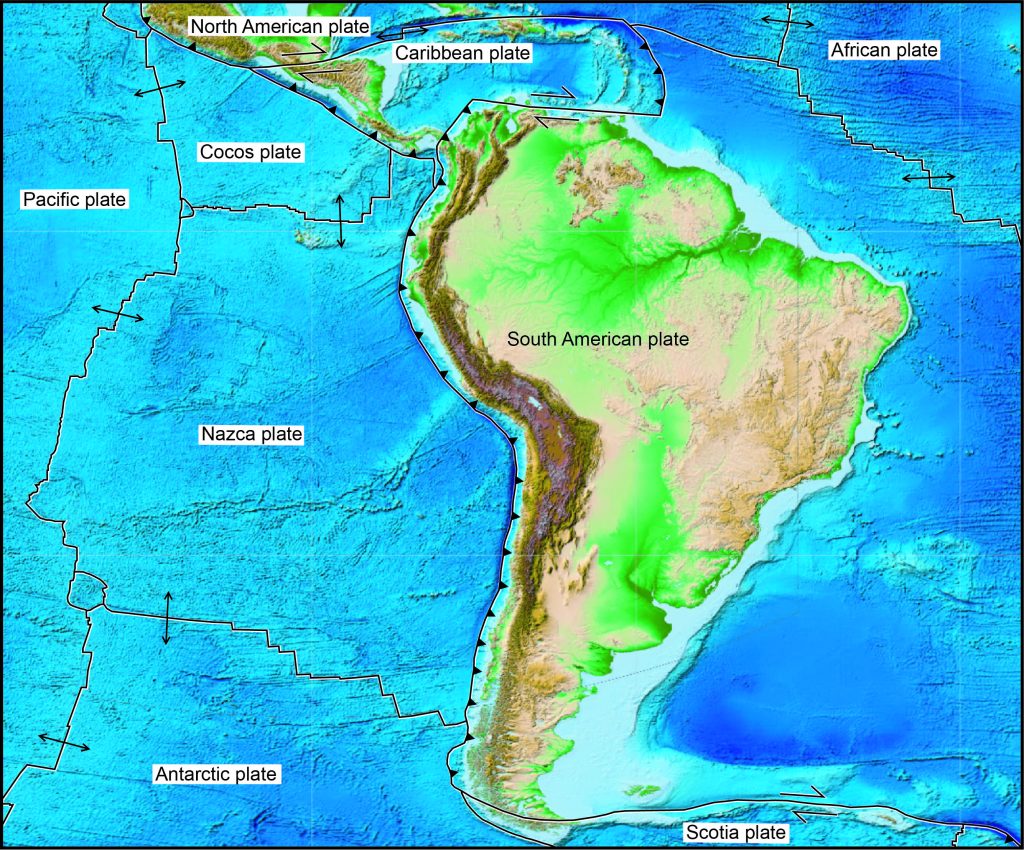

The Marine Currents:
Dryness And Wetness
Strong and constant winds push the superficial water of the Humboldt’s Current, this cold water that comes from the Antarctic is very rich in nutrients and oxygen and it brings dryness.
On the other hand, the warm Panama or El Nino current brings humidity and rain to the Coast of Ecuador, this phenomenon occurs every 3 years the warm water stays on the Pacific Coast and it causes rain.
About Explore & Conquer
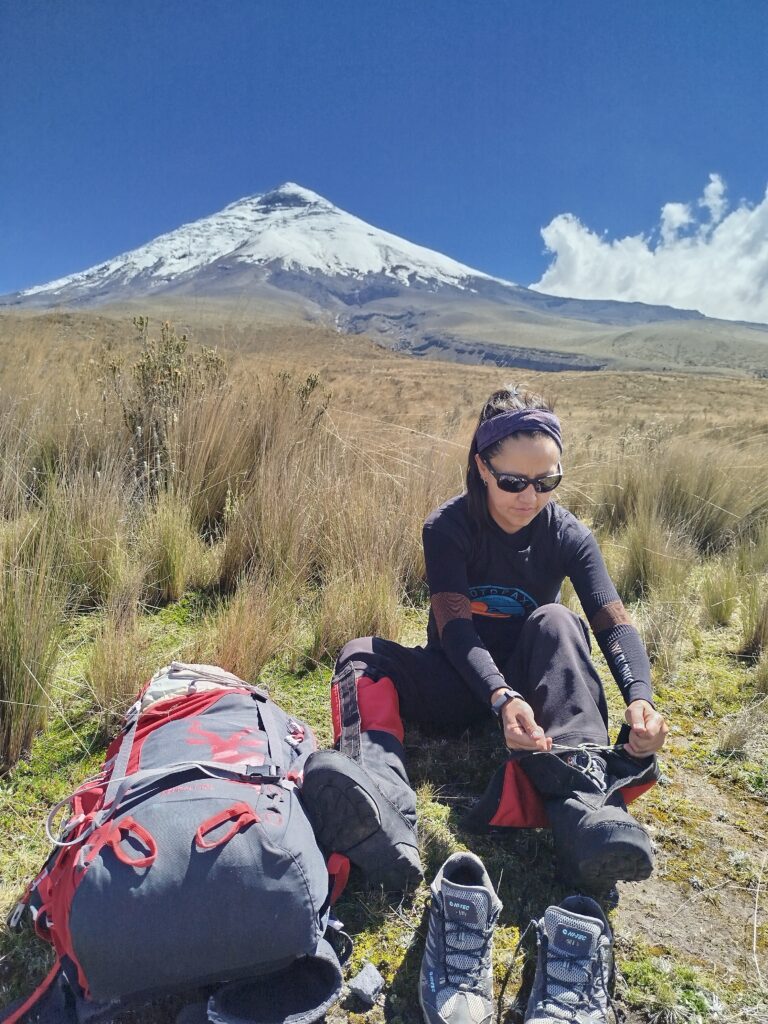


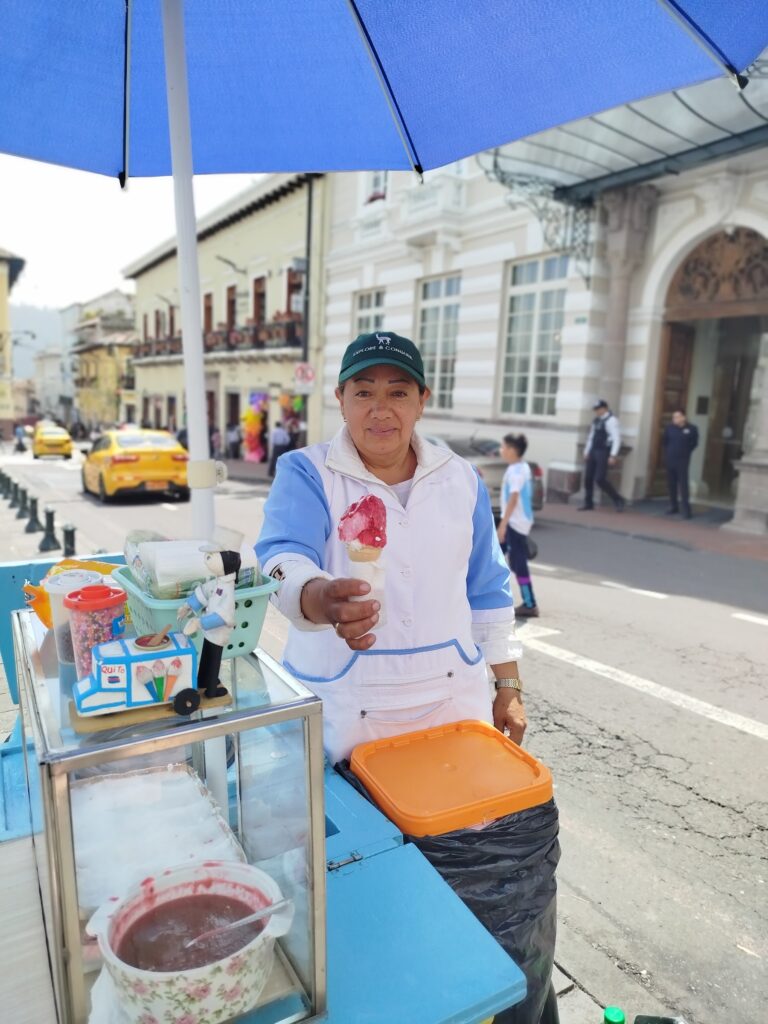
Vision
Explore&Conquer is a B2C business specialized in creating tailored proposals in terms of travel experiences. Our purpose is to guide, support and complete travel projects for clients who like to explore and connect through experiences that match their interests and life projects.
Mission
Explore&Conquer es un negocio B2C especializado en crear propuestas a la medida en cuanto a experiencias de viajes, nuestro propósito es orientar, apoyar y concretar proyectos de viaje a clientes que gustan de explorar y conectar a través de experiencias que van de acuerdo a sus intereses y proyectos de vida.
Values
We care about people, you are our reason for being, we are loyal to a sustainable, honest business model in which respect for nature and human value are essential.
Services
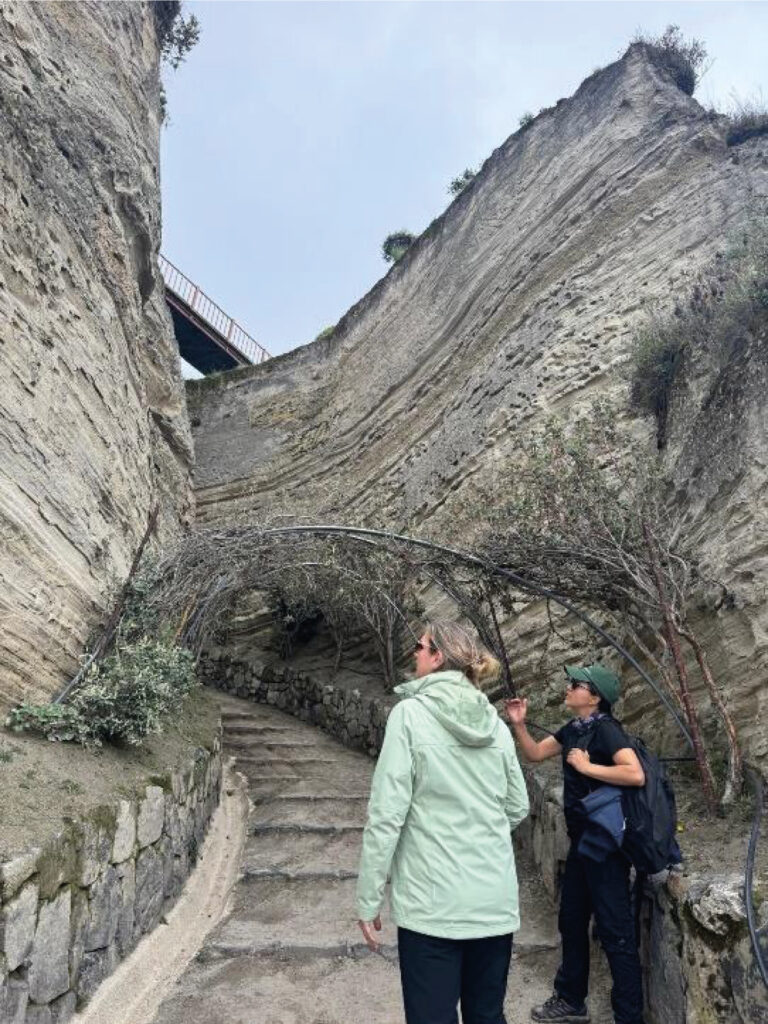
Private Guide
Languages: English and Spanish
At Explore&Conquer we work with a team of specialized and experienced guides to meet your needs. Our guides are here to accompany you whatever the focus of your trip is: whether it´s for a high mountain ascent, a cultural visit or for a specific project. We are here to facilitate your trip, ensure a safe stay and make sure you receive all the essential information you need. Whether for an individual traveler or a group, we have the experience to make your travel experience enriching!

Transport
We offer private transportation, so you feel safe and do not have to worry about anything. We offer a wide range of services, from a shuttle service between the airport and your hotel till several day of services. Whether you are a single person or a group, we have vehicles at your disposal.
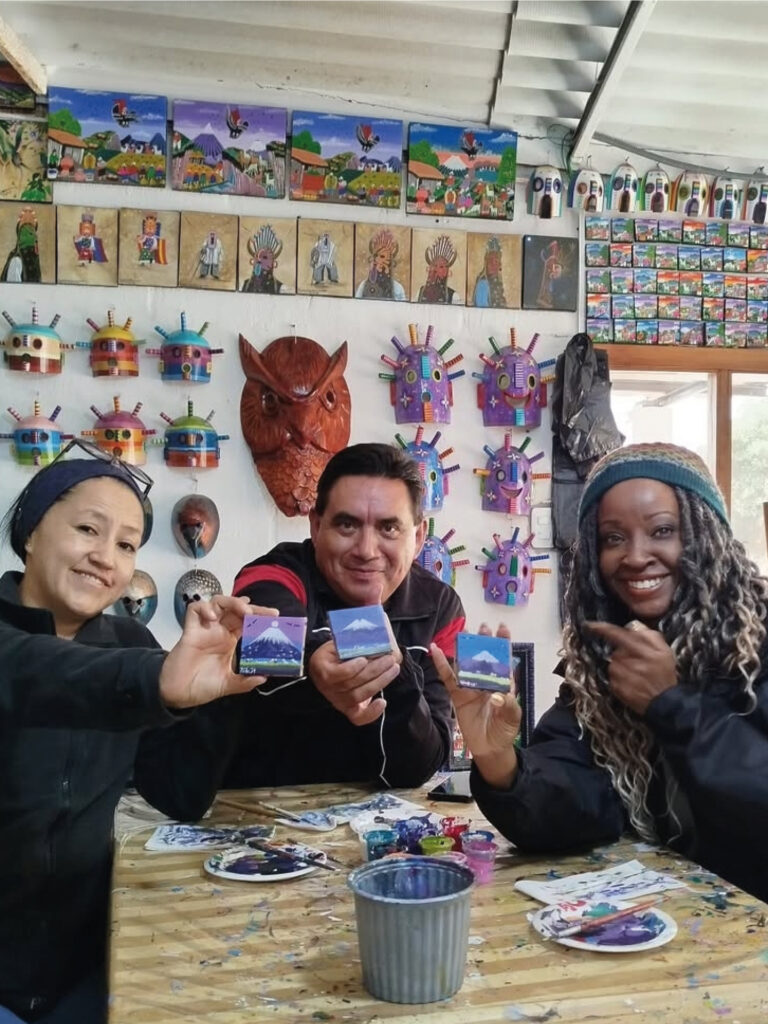
Tailor Made Experiences
Ecuador land Tours – Galapagos Tours
The expertise and experience are at your service to help you plan your dream trip! Let us know your needs and budget and we will provide a tailor made itinerary. Whether you want to visit the Galapagos, the coast, the Amazon, the Andes, climb volcanoes, visit communities, live an authentic cultural experience, bird and mammal watching, photography, I will be happy to organize them
Day Tours
Yanacocha Reserve
Nature And Birdwatching
The Yanacocha reserve is located 30 kilometers (18,64 miles) by car at west of the city of Quito, on the slopes of the Pichincha volcano. Here in the Andean Forest, there are native birds and plants of this stunning ecosystem. The reserve was created to protect the Black-breasted Puffleg, a rare and critically endangered hummingbird endemic to Ecuador.
It is a full-day tour to enjoy nature and disconnect from the city.
Private Services
Contact us to receive the detailed program

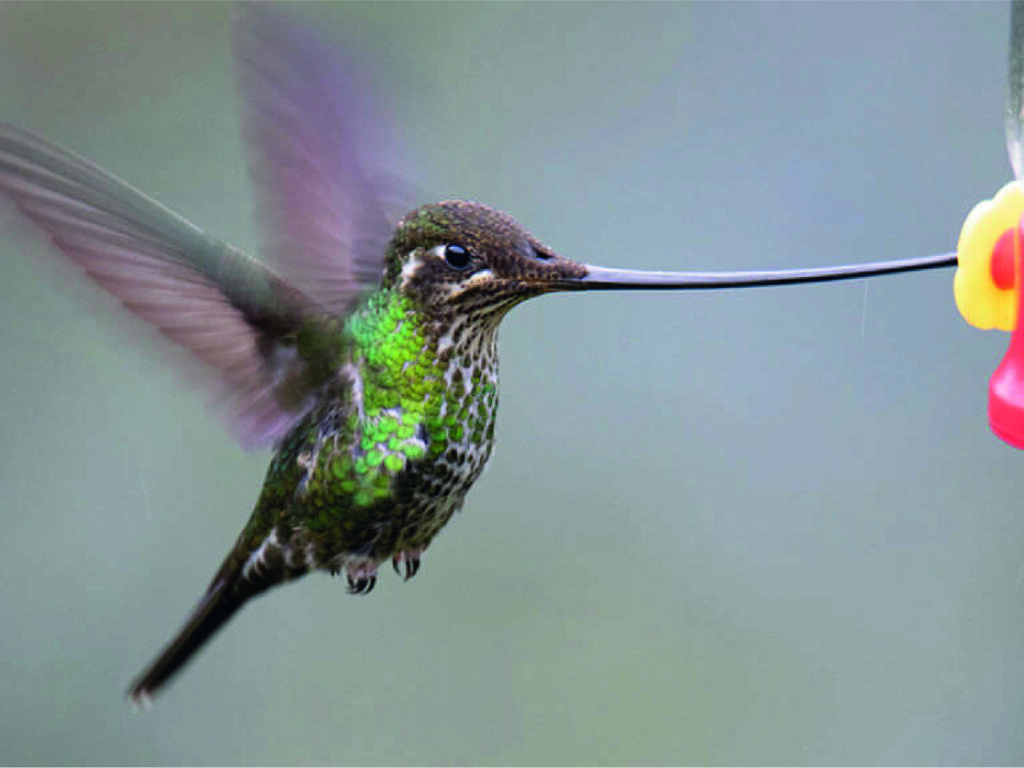

Trekking To The Rucu Pichincha Volcano
Pichincha Volcano, is a mid-altitude stratovolcano in Ecuador, and the capital city, Quito, looks at it every day. Climbing Pichincha Volcano in Ecuador is a popular choice for adventure. The route started at the Teleferico (Cable Car), is perfect for passionate, curious and motivated trekkers looking to challenge themselves going to the peak at 4,698 meters (15,413 feet).
Private Services
Contact us to receive the detailed program
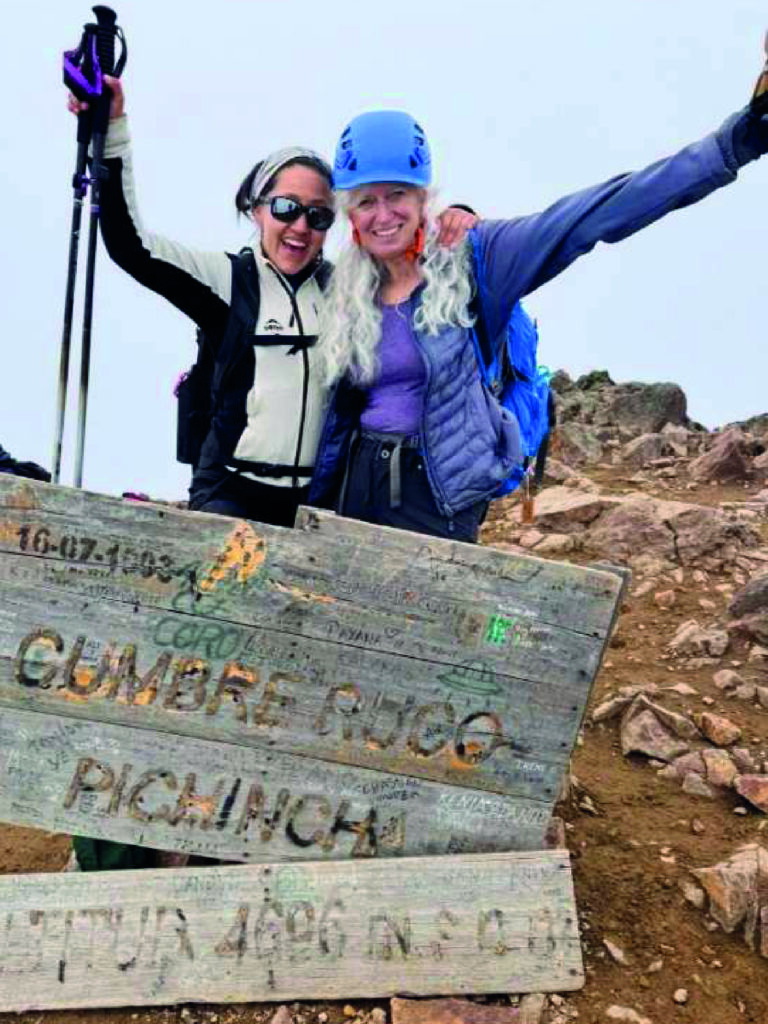
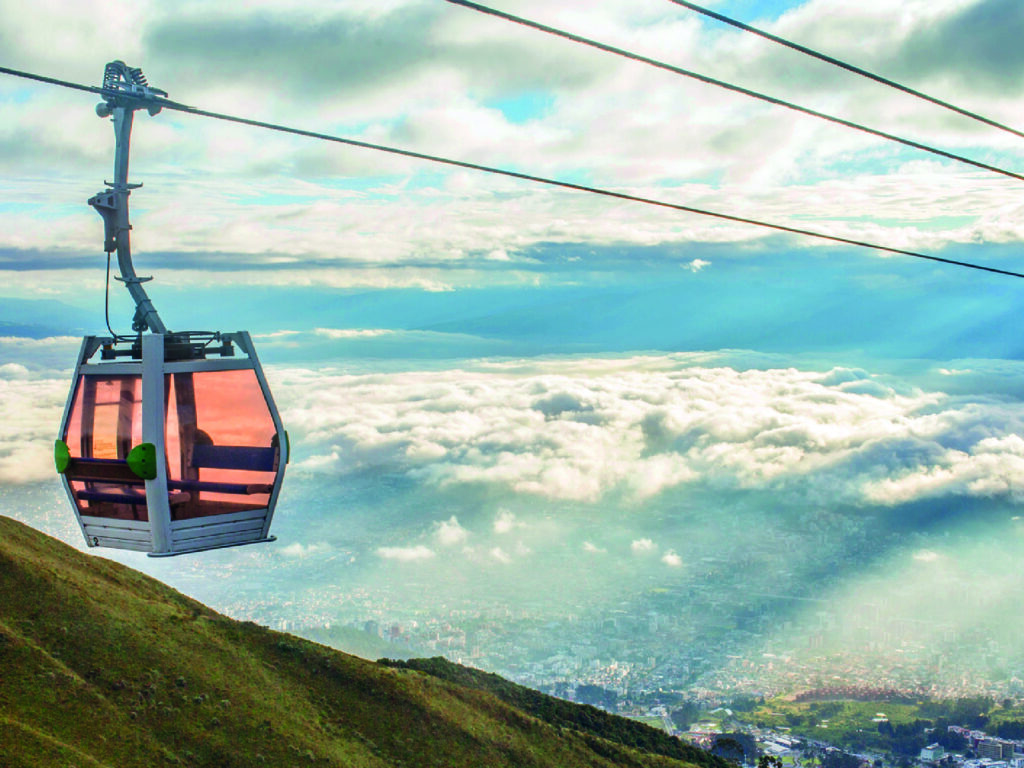
PAPALLACTA TREK
Is a hike through a section of the Cayambe Coca National Park, passing through lagoons, grasslands and we will understand the moor and its importance and function, it is an invitation to connect and experience the greatness of the mountains and their fascinating landscapes, we end the day with a well-deserved rest in the Papallacta Hot Springs.
Private Services
Contact us to receive the detailed program
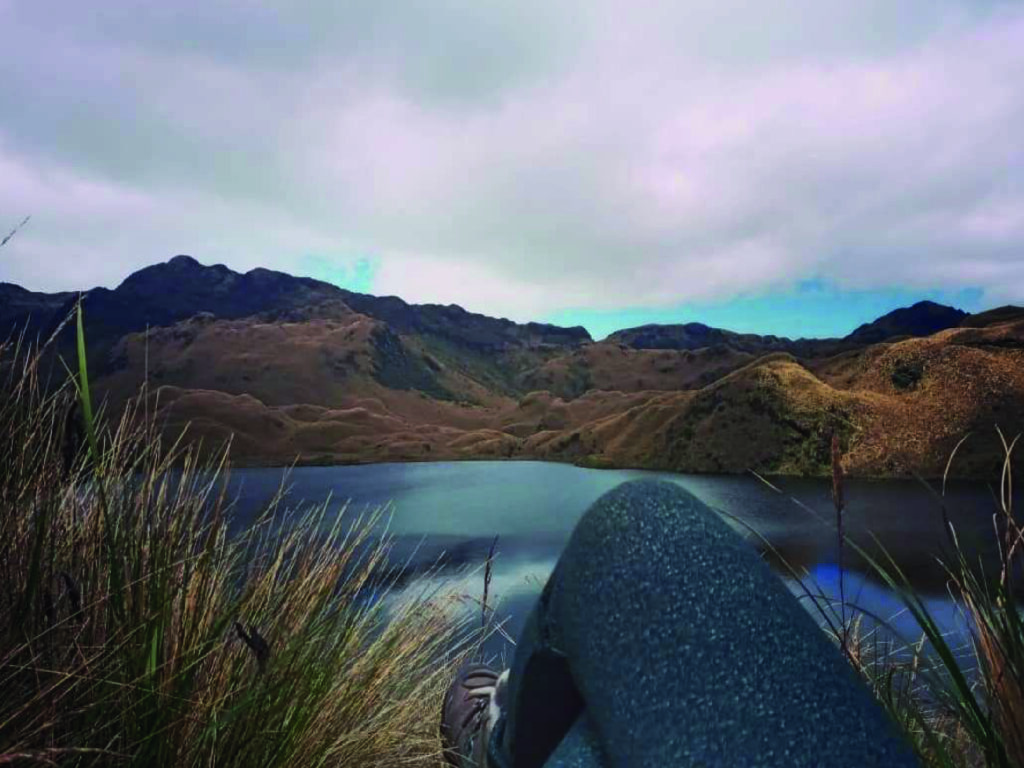
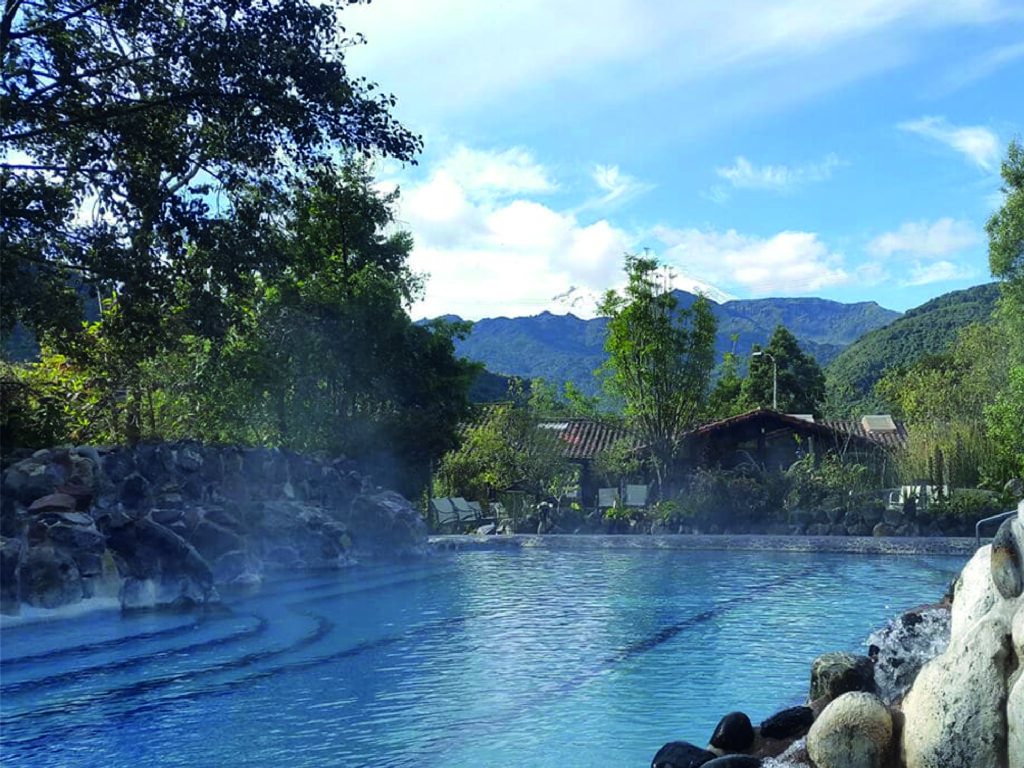
Otavalo Excursion
The Otavalo market is famous throughout South America for its textiles, crafts and vibrant culture, it is about two hours from the city of Quito. The tour can also include visits to other places of interest in the area such as a rose plantation or the archaeological site of Cochasqui, kayaking or paddle boarding on Lake San Pablo which is located at the base of the Imbabura Volcano, it’s up to you!
Private Services
Contact us to receive the detailed program
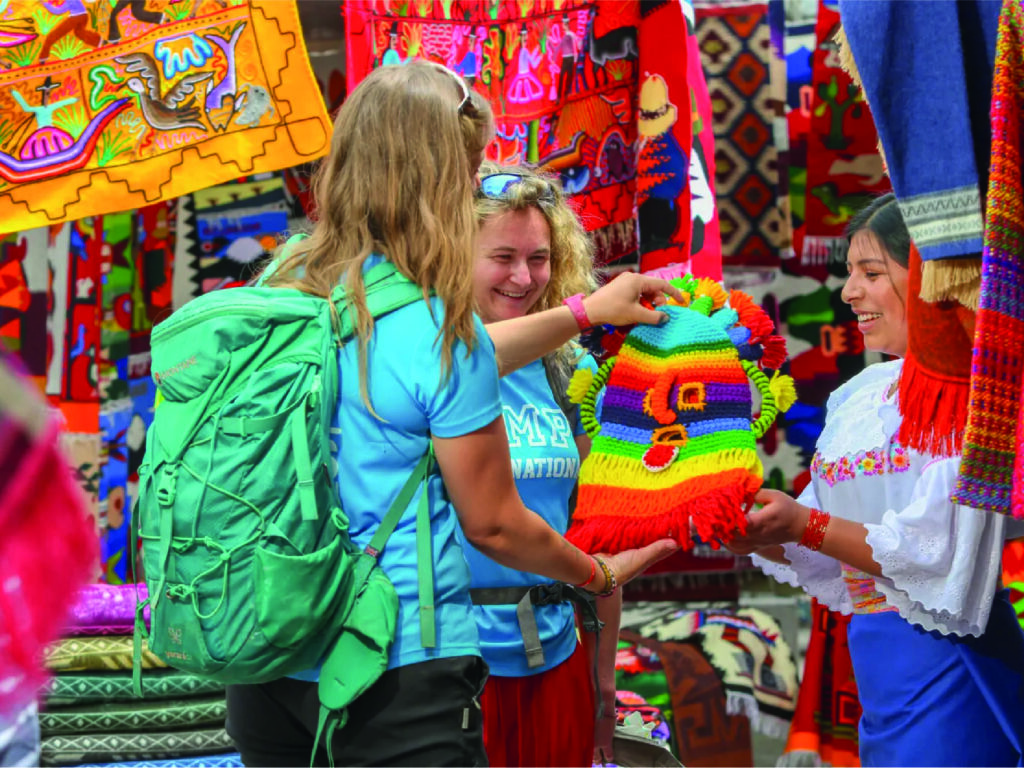
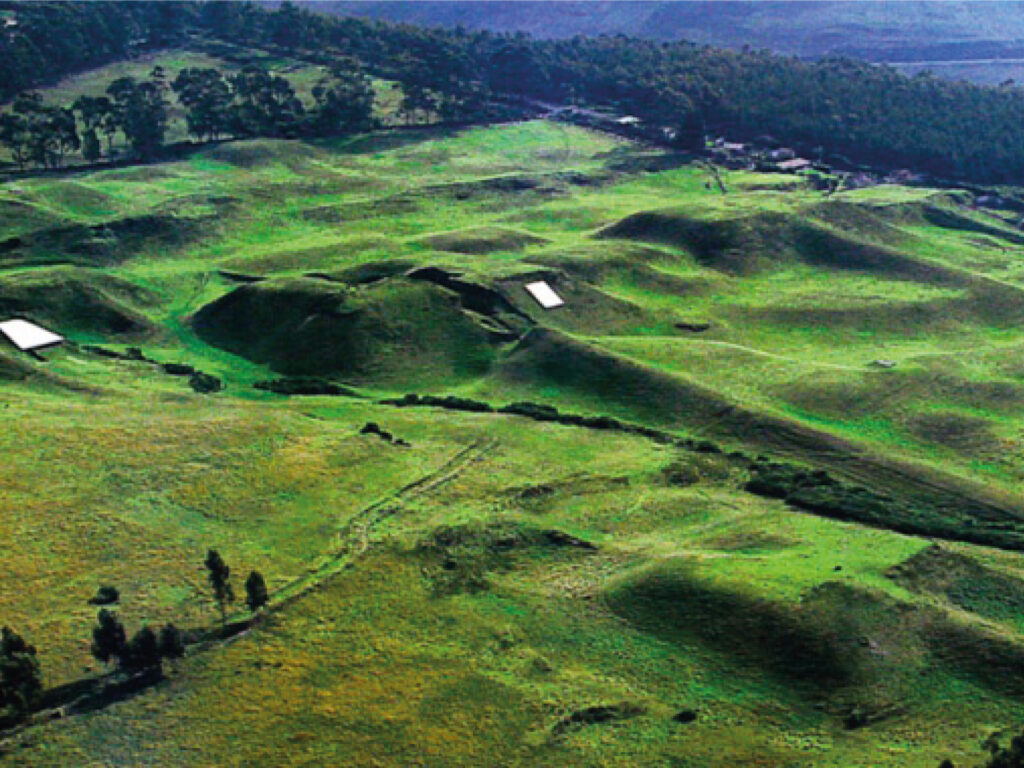

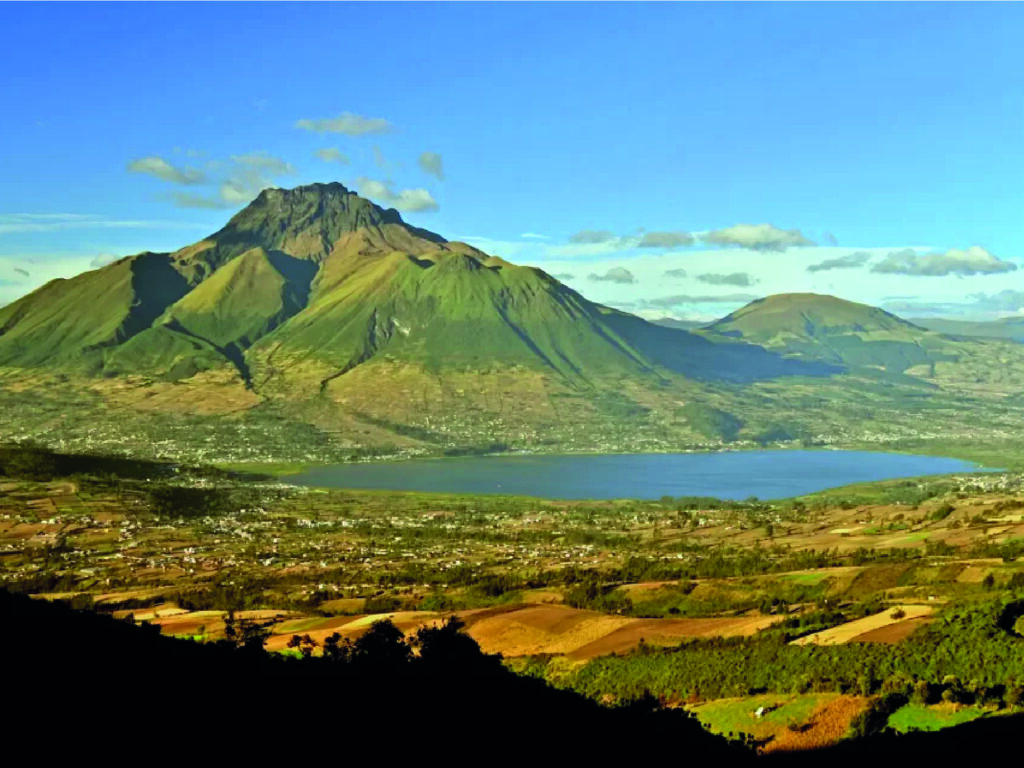
Cotopaxi Horseback
Ride in the moorland like a cowboy! It is an opportunity to connect with nature and with yourself, exploring the landscapes and being part of them. It is an activity that does not require previous experience, the guides have the necessary experience to make your day pleasant and memorable.
Private Services
Contact us to receive the detailed program
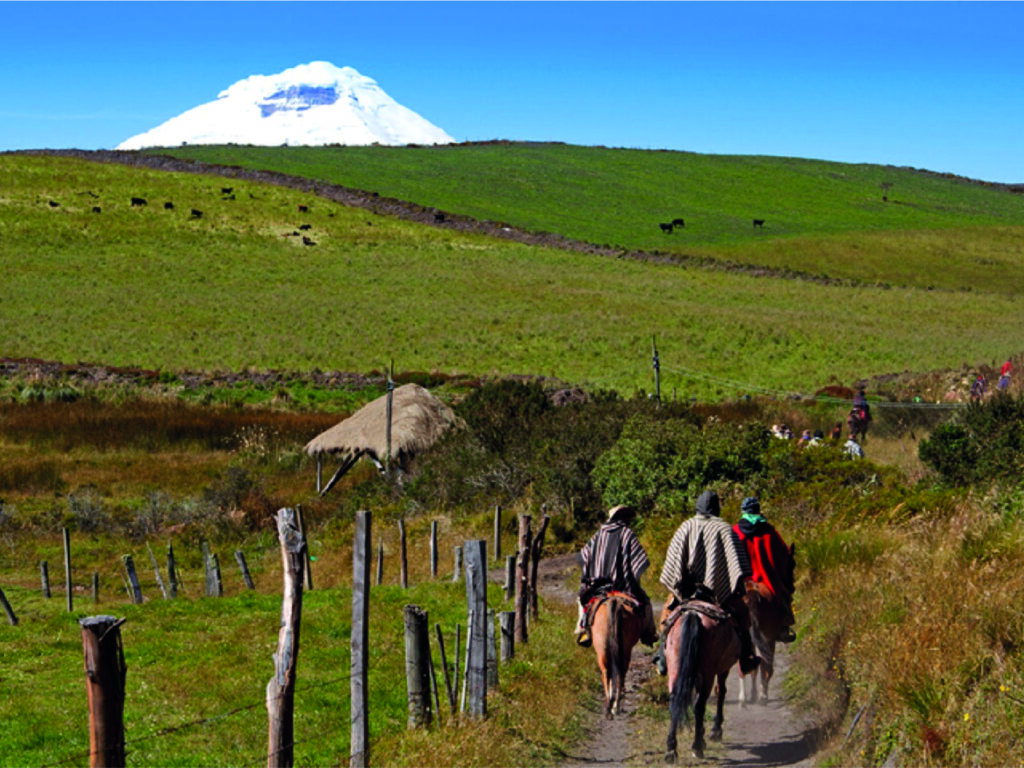
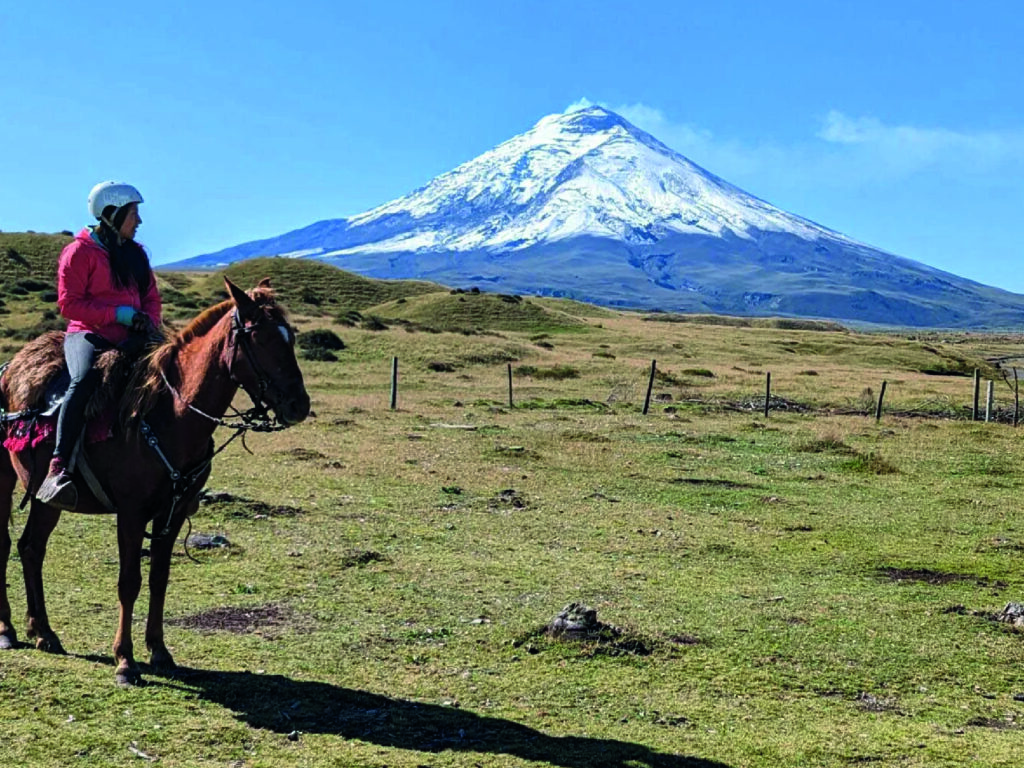
Quilotoa
Explore the impressive Andean highlands on a trip that begins in Quito towards the south, the panoramic view of some volcanoes takes us through towns settled in the steep mountains, it is the perfect opportunity to discover ways of life, agriculture of the lands and history of the natives. We will reach the Quilotoa Crater from where we will descend towards the lagoon. This volcano is located in the Los Illinizas Reserve.
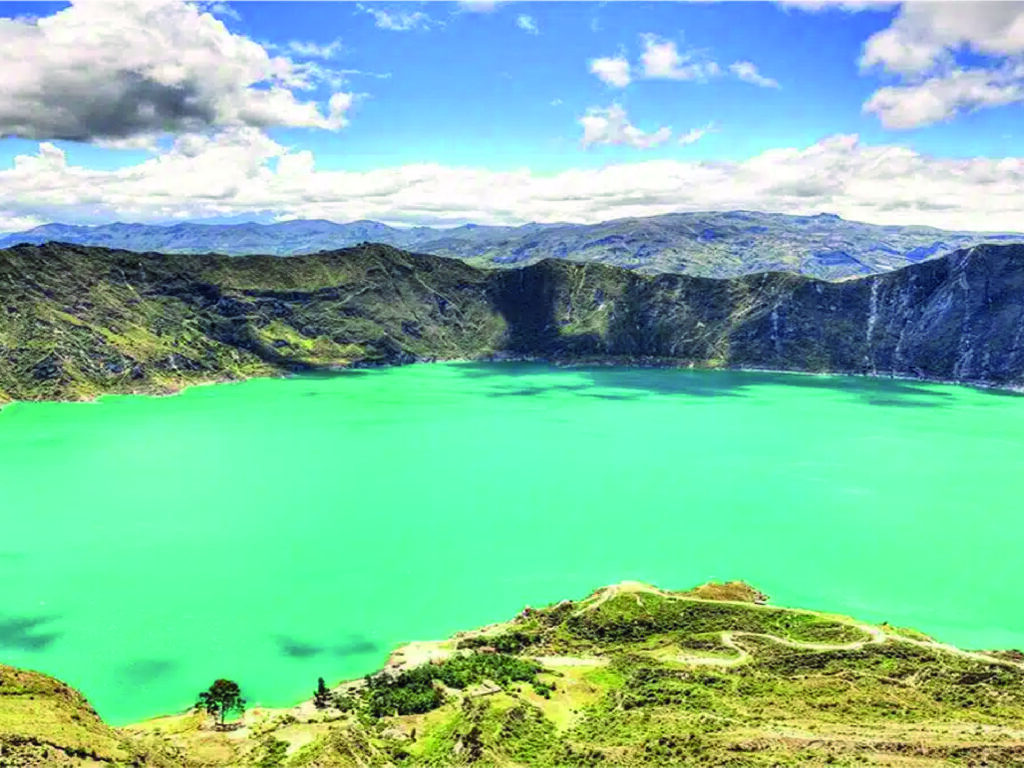
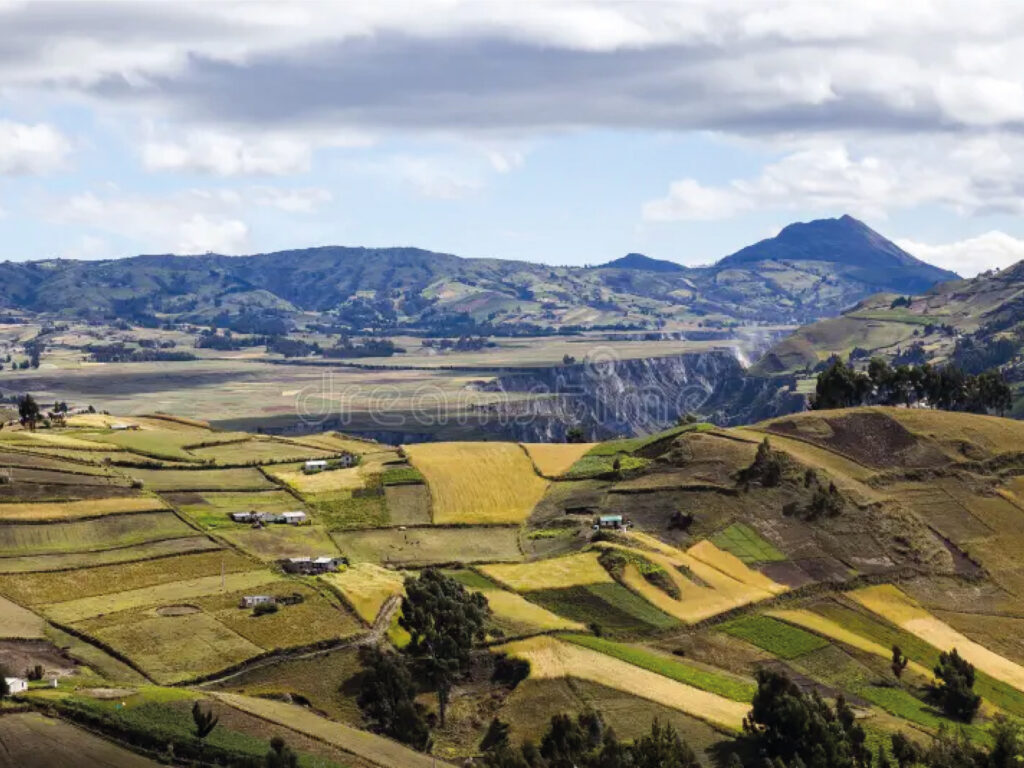
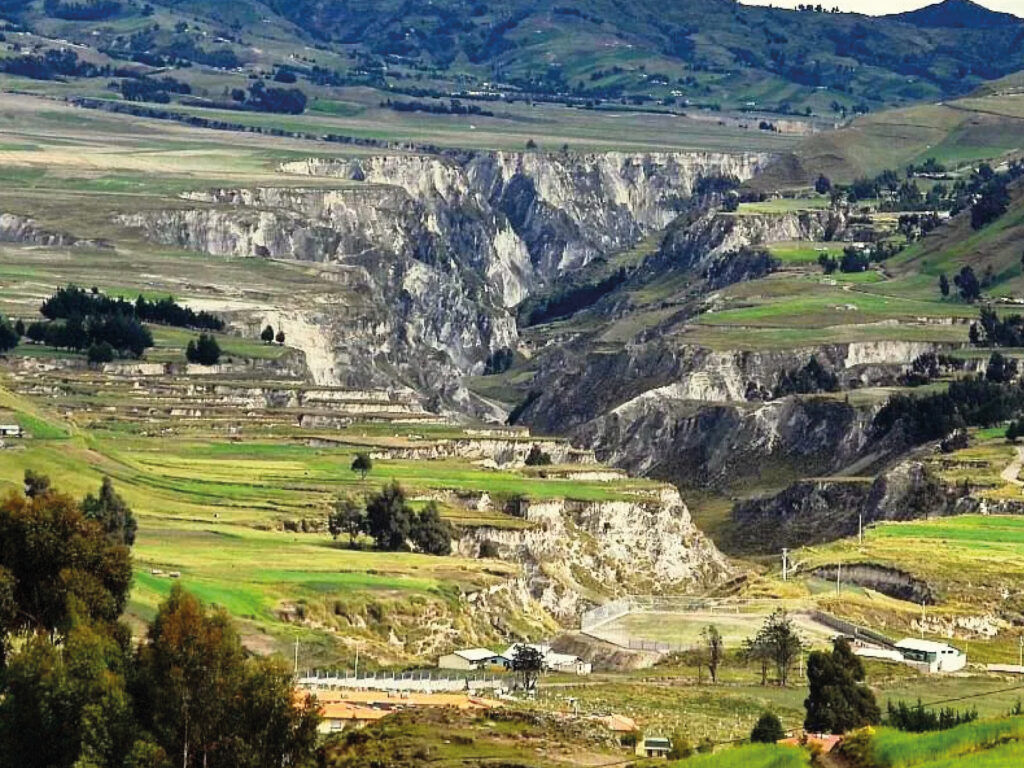
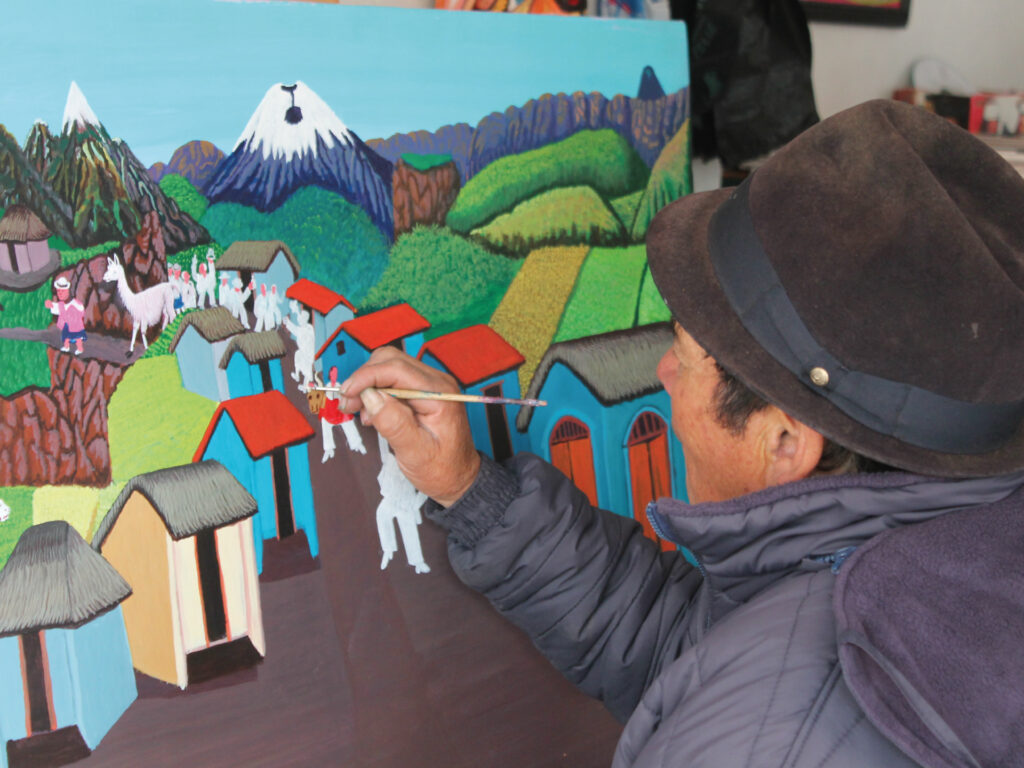
Photography Tour To Mindo
If your passion is photography, this tour is perfect for you! escape the city and go to the Cloud Forest, here the abundant clouds reduce direct and indirect light, promoting the growth of mosses and epiphytes such as orchids, bromeliads, ferns, lichens in a particularly exuberant way, in addition to the colorful birds, Ecuador has 1700 species of birds and in this ecosystem there are around 500 species including hummingbirds, tanagers, toucans, flowerpircers, honeyecreepers.
We take you to visit strategic places where you will have good opportunities to take your photos!
Private Services
Contact us to receive the detailed program
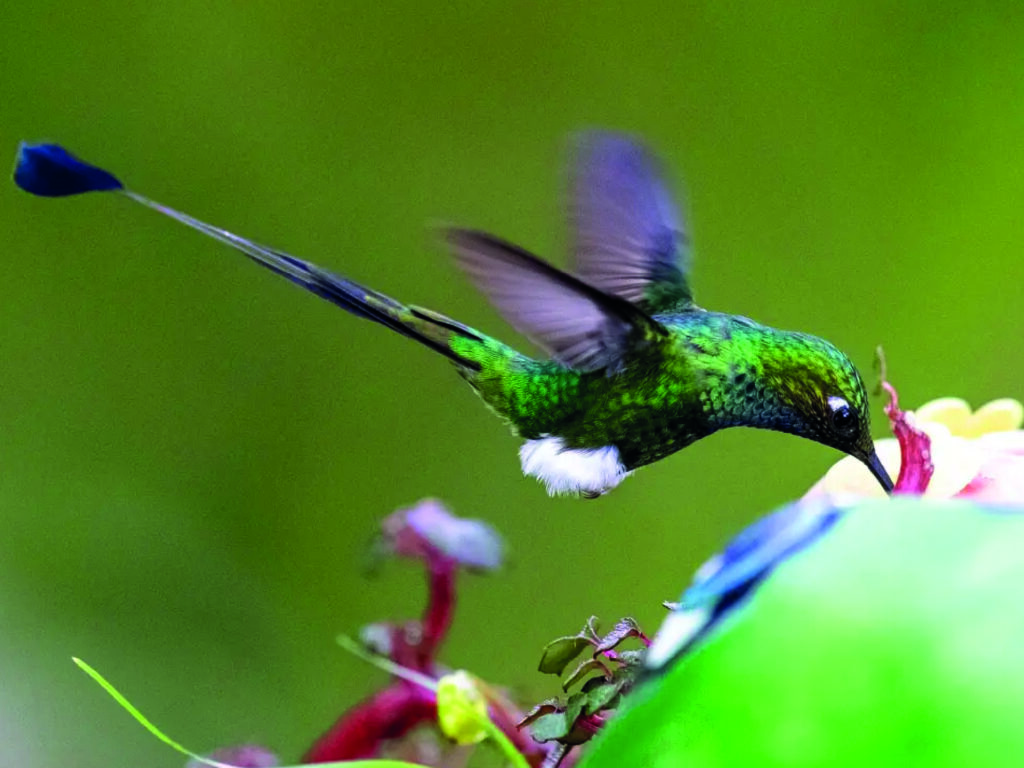
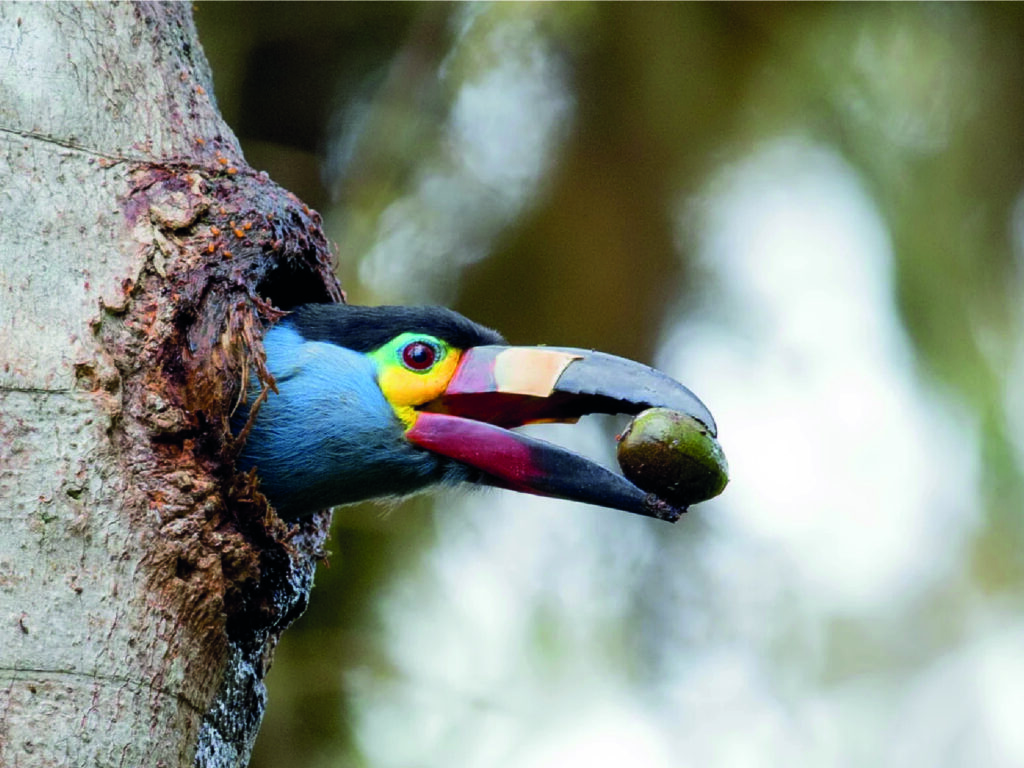
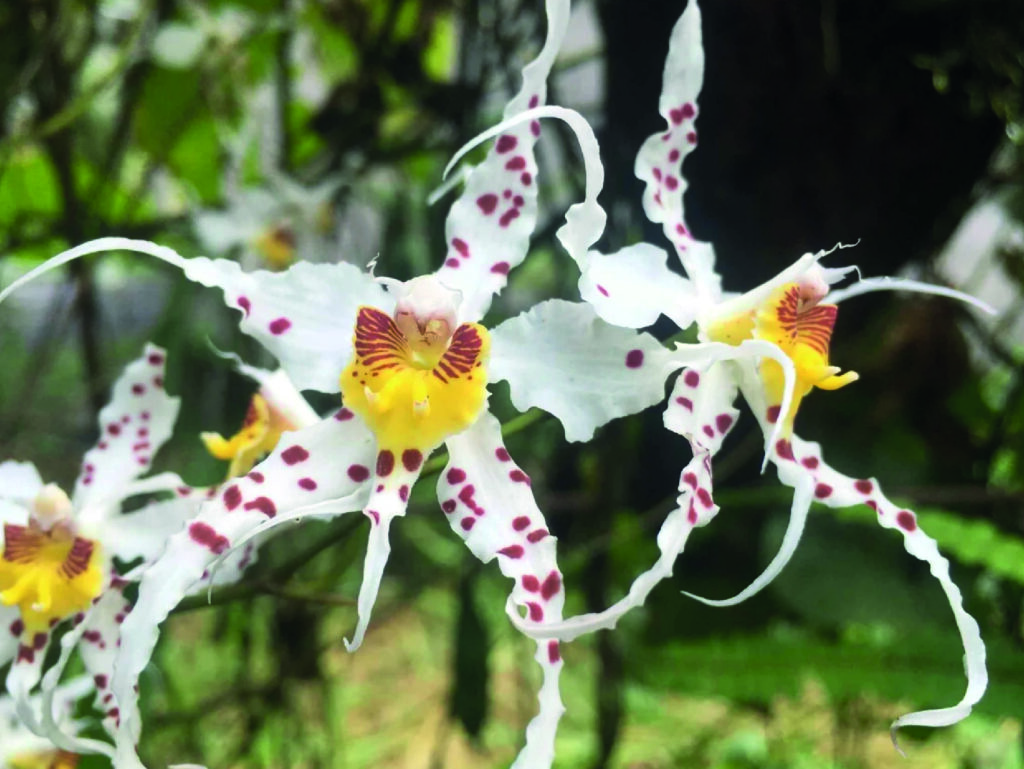
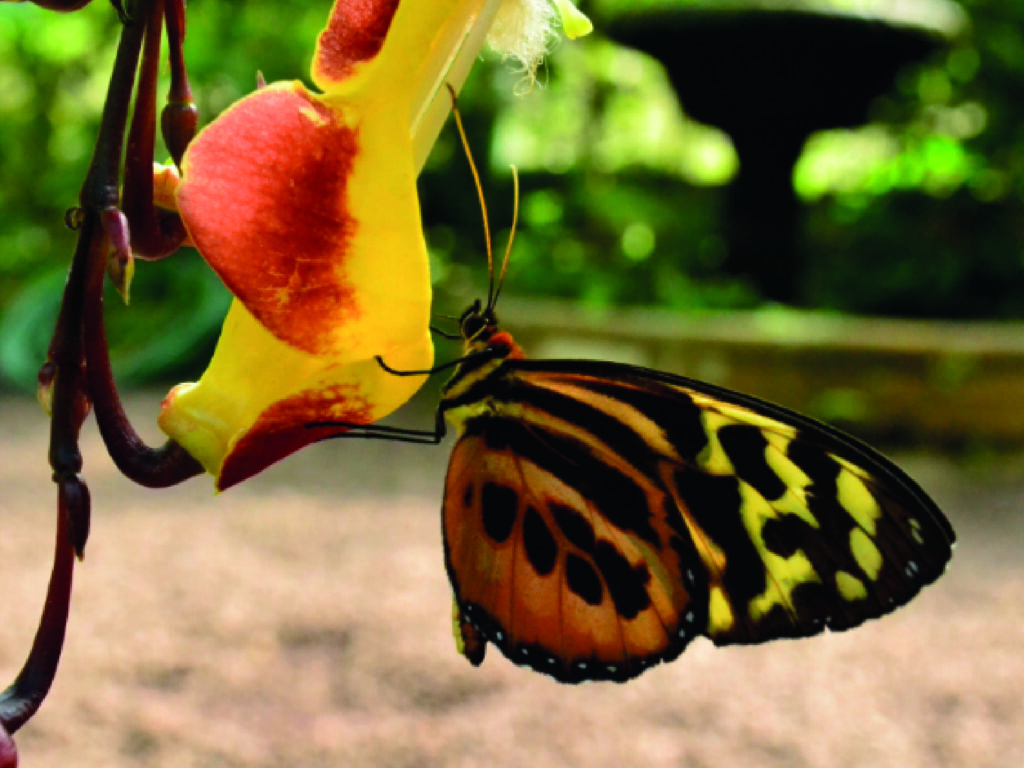
Multiday Tours
Walking In The Footsteps Of The Karanqui
3 Days / 2 Nights
On day one, the journey begins in Quito, from here we head northwest about 58 km to Cotacachi, a sacred mountain in the religious conception of the northern Indians. It is an ancient eroded and extinct volcano located in the Cotacachi-Cayapas Ecological Reserve, we will walk through its crater, go to the most visited handicraft market in South America El Marcado de los Ponchos and visit a textile workshop, we will finish our day in the community of San Pablo del Lago and spend the night in a local family’s house, there by the lake.
Day two begins with a visit to the Kichwa Cayambi de Angla indigenous community, this place is full of Andean traditions that have been preserved generation after generation, the women will perform an energetic cleansing before continuing our hike to Zuleta which is also a Kichwa Karanqui community. This place is characterized by being an archaeological zone, rich in cultural diversity which has been manifested in music, dance, food, etc. This place is part of the Sacred Karanki Valley, where sacred rituals have been performed for thousands of years as part of the celebrations of the Andean Raymis. We will spend the night in Zuleta, in the home of a local family.
All these places are connected by Andean ancestral trails, which for thousands of years our ancestors have used for trade, pilgrimage and healing of the physical, emotional and mental body.
On day three we walk to the area of Cubilche, here there are two small lakes located on the top of this hill. This sacred and highly energetic place is a space to awaken our connection with nature. We end this experience with a visit to the Mucha Naju Rumi viewpoint and return to Quito.
The Last Refuge Of The Incas
Quilotoa Circuit 3 Days / 2 Nights
This is a multi-day trek, a 34.5 km/21.5-mile circuit, known as the Quilotoa Circuit that connects trails and remote villages in the Ecuadorian highlands with a volcanic lake.
On the first day we leave Quito for Sigchos, approximately 2.5 hours driving south to Cotopaxi Province.
For three days, you will explore the beautiful Andean environment on foot. The days pass as you hike landscapes, breathe in the tranquility and enjoy yourself. In addition to the incredible views, you will explore various climatic zones, trails that in the past were walked by the Incas on their way to their last refuge.
On this trek you will also meet and share with the local people, the panzaleos, indigenous people who occupy these lands, they are artisans, musicians, farmers, entrepreneurs of their hotel businesses, so we encourage the continuity of these projects.
If you have heavy luggage, we will transport you from point A to B. The final destination of your hike is the remote rim of the Quilotoa volcanic crater lake until the end of the hike.
Without a doubt, this is an unforgettable and impressive route.
Amazonia- Yasuni National Park
5 Days / 4 Nights
Deep in the Amazon rainforest of Ecuador, Yasuni National Park boasts up to 650 different species of trees, the biodiversity statistics for mammals, birds, amphibians, plants and micro-organisms are equally incredible. In fact, Yasuní National Park holds a long list of world records for biodiversity and has been listed as a biosphere reserve by UNESCO.
By visiting this jungle site, you participate in sustainable tourism that preserves an untouched part of the earth and reduces pressure to allow development that would infringe on the natural rainforest environment. In addition, you will have the opportunity to learn about the Kichwa women’s community project, a global benchmark for rainforest conservation. Together they have managed to merge sustainability, community work and responsible tourism.
Galapagos Classic
6 Days / 5 Nights
This option is a combination of land activities and boat trips to neighboring islands. These are shared trips.
visiting the three main islands of San Cristobal, Santa Cruz and Isabela. The trip between islands is done by ferry which has a capacity of 24 to 32 passengers and takes two hours of sailing. We have chosen the highlights in terms of places to visit, we take you to visit Interpretation Centers, Wetlands, there will be activities such as hiking and snorkeling.
Altogether these activities have been designed to conquer you and show you the history of the islands, their formation, discovery, unique flora and fauna, efforts to conserve them, as well as the impact of tourism and the importance of preserving them.
Conquered By The Andes- High Mountain Tour
9 Days / 8 Nights
This tour is ideal for those who enjoy hiking and adventure, on this occasion I have designed a combination of locations and activities to acclimatize you and get you ready for other adventures in other mountains. For many people the summit is not always the main objective, we offer you a mountain experience with expert guides who will show you more than just the summit.
The first two days will be relaxed, a trek that aims to take you through different terrains, and show you the magic of these hidden villages, we will hike the steep hills, descend into the valleys through the canyons, meet local people, taste local food, this will be good training for the mountains that follow.
Then we start with the high mountain challenge, we will climb the Rucu Pichincha Volcano whose summit is at 4696 m/15.406 ft, it is a dormant volcano and to access it we go by cable car and from there we start with the hike that goes through grasslands, rocks, sandy areas and finally the summit!
The next day we move to the Los Illinizas Reserve, here we walk about 5 k / 3 miles to the Refugio Nuevos Horizontes where we spend the night and the next morning, we attempt the summit which is at about 5.126 m / 16.817 feet.
We continue with the Cotopaxi, we will walk to the Refugio Nuevos Horizontes at 4.500 m / 14.764 ft here we will spend the night, depending on the weather we will set the departure time which is usually from midnight, the first hours are walking on a terrain without ice to later add to the equipment a pair of crampons and continue along the glacier, the climbing time will depend on the experience and physical condition of each participant, the mountain guides will be there to support you and make the best decision whether to continue to the summit or to return.
The last day is for relaxing in the hot springs and preparing your luggage for your return home.
Exploring The Andes
10 Days / 9 Nights
In the Andes Region, there is the Avenue of the Volcanoes. This name comes from a long stretch of the Andes Mountains in Ecuador, where several volcanoes are located close to each other, creating an impressive natural spectacle that you should visit. The Avenue of the Volcanoes is a significant geological wonder. It is part of Ecuador’s natural beauty and biodiversity.
Starting in Quito we travel about 875 km / 543 m, visiting Heritage Cities, Historical Monuments, National Parks, Indigenous Communities, following in the footsteps of the scientist Alexander Von Humboldt the scientist who rediscovered America. This trip combines nature, culture, as well as experiences that will let you be close to these attractions and live them.
The adventure ends in the city of Guayaquil from where you can continue your stay to the Galapagos Islands, ask for our classic tour.